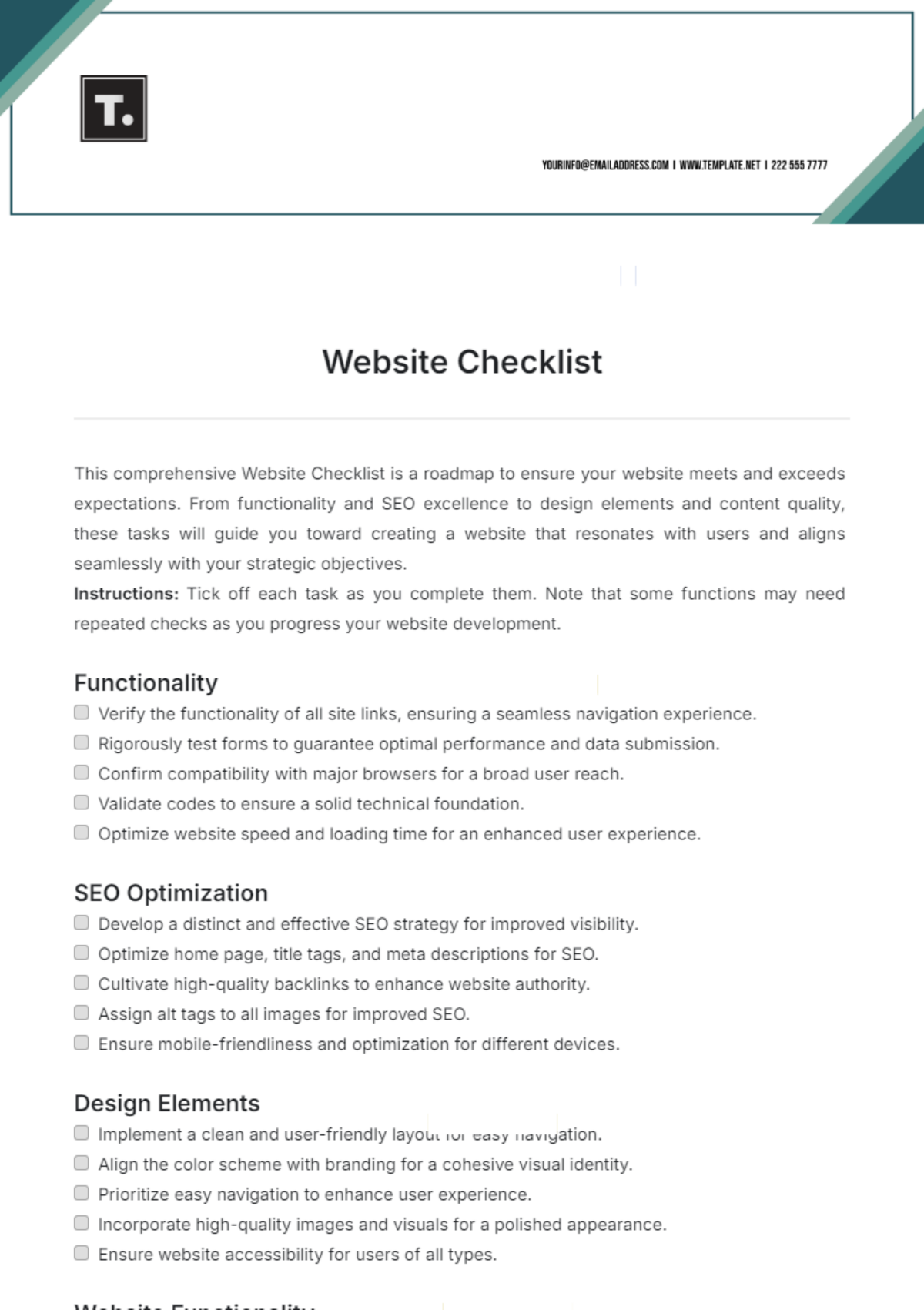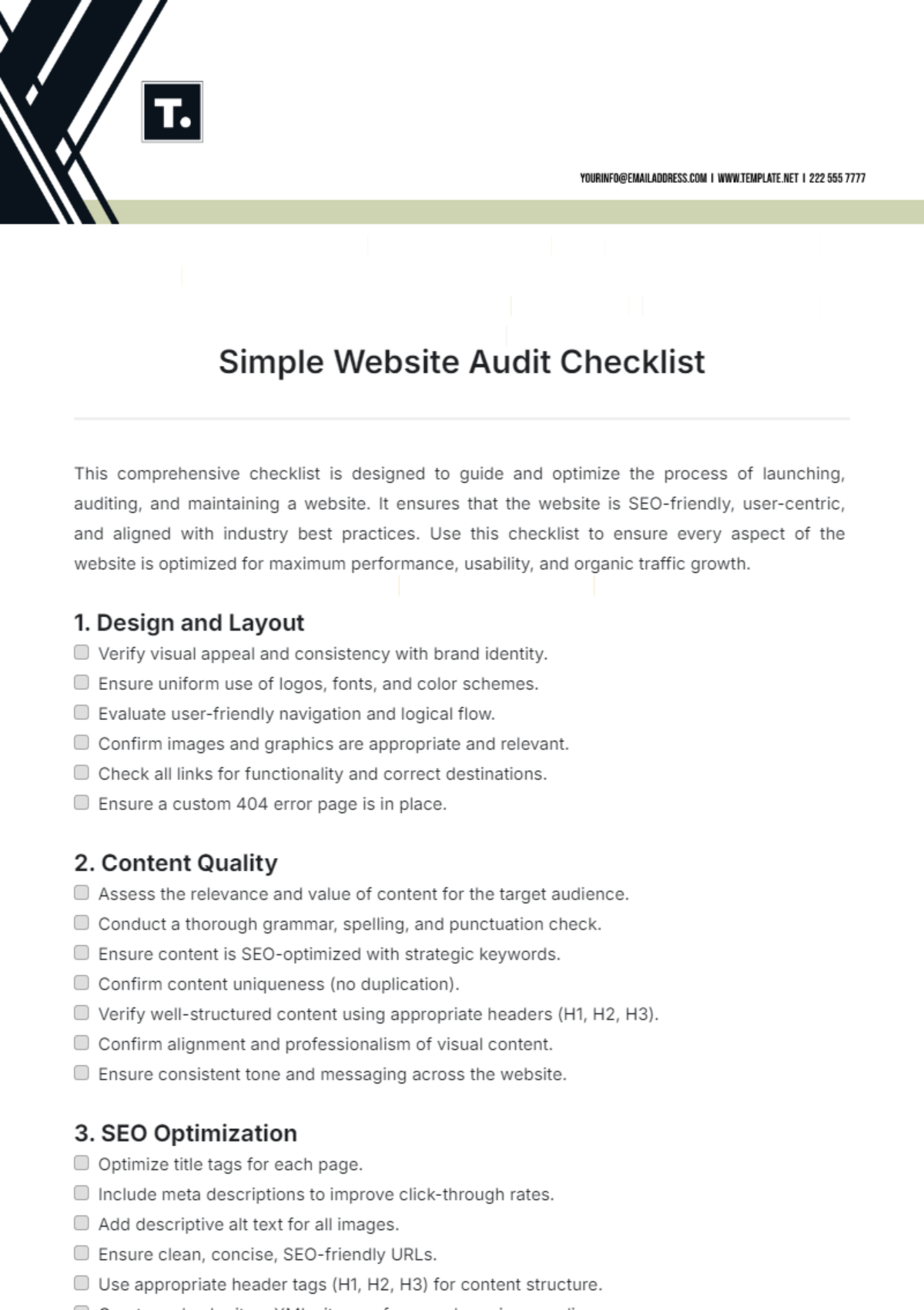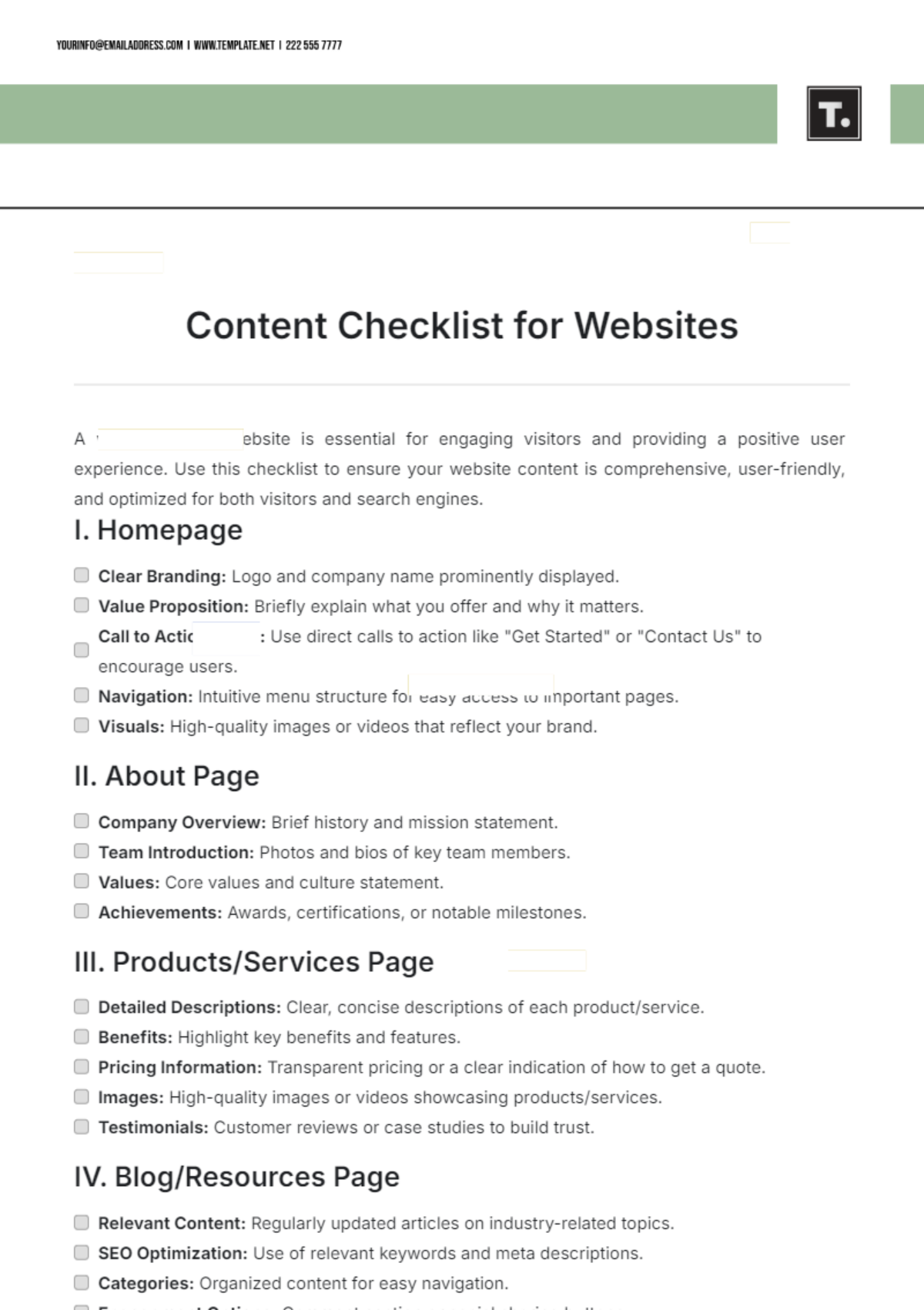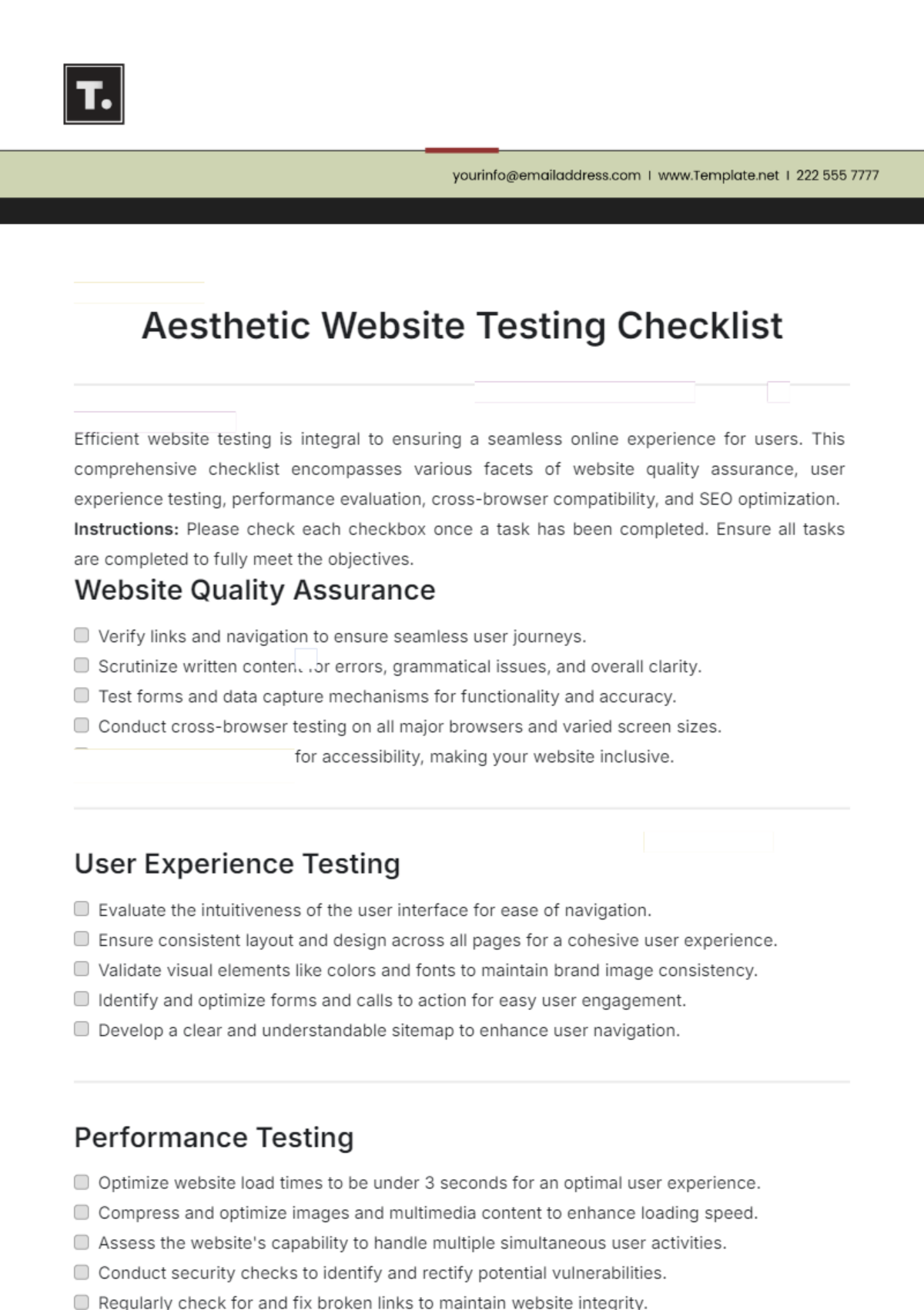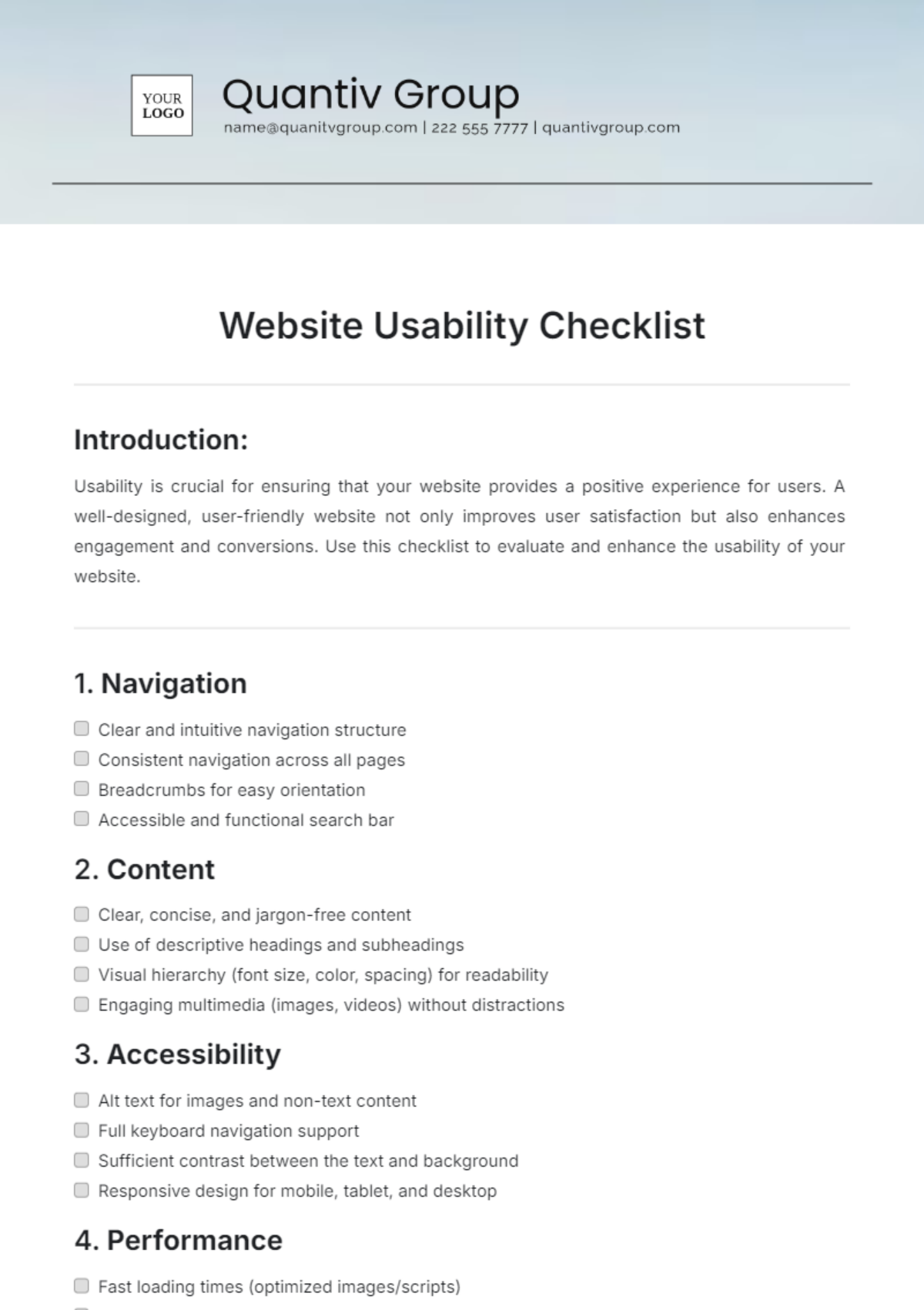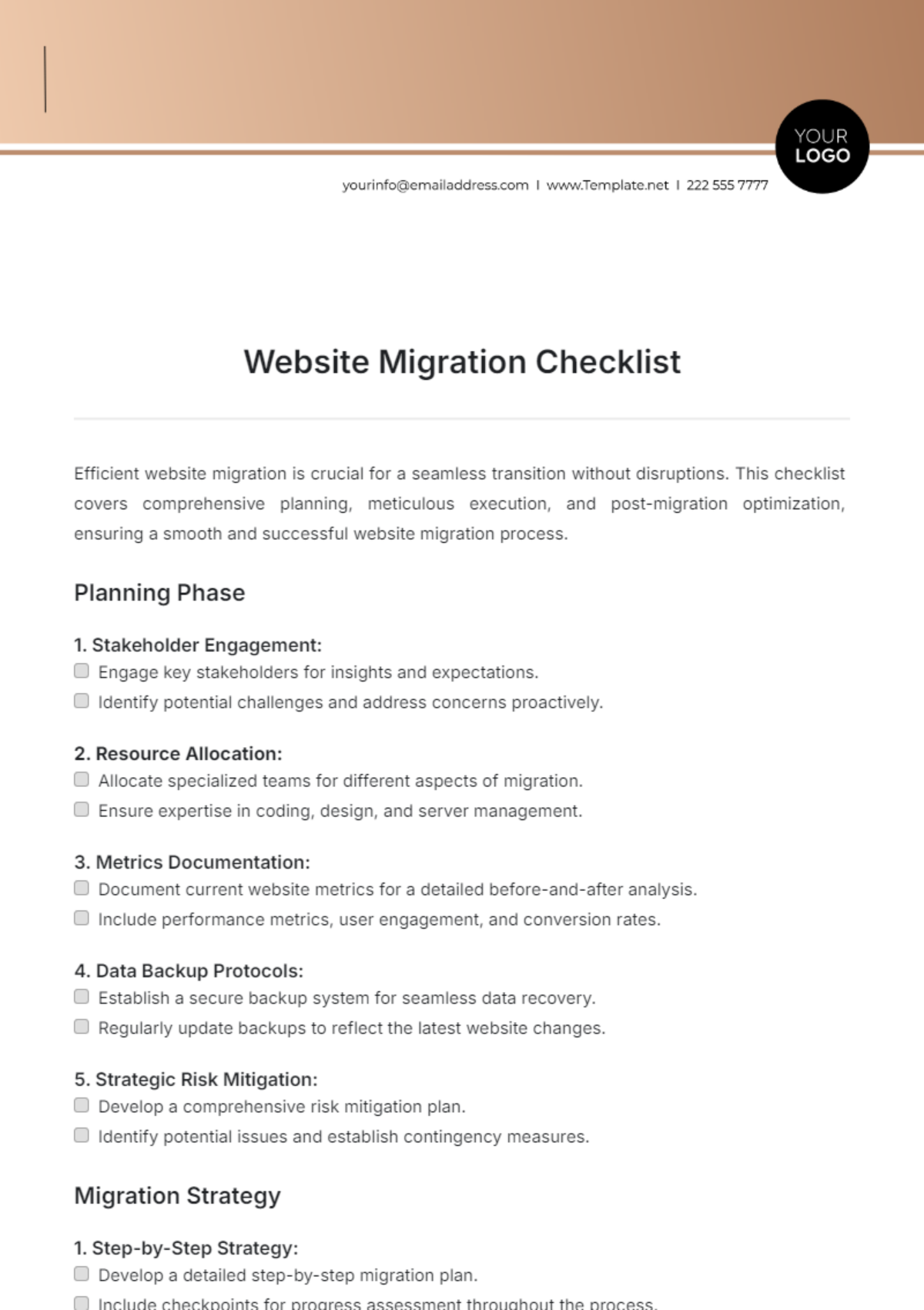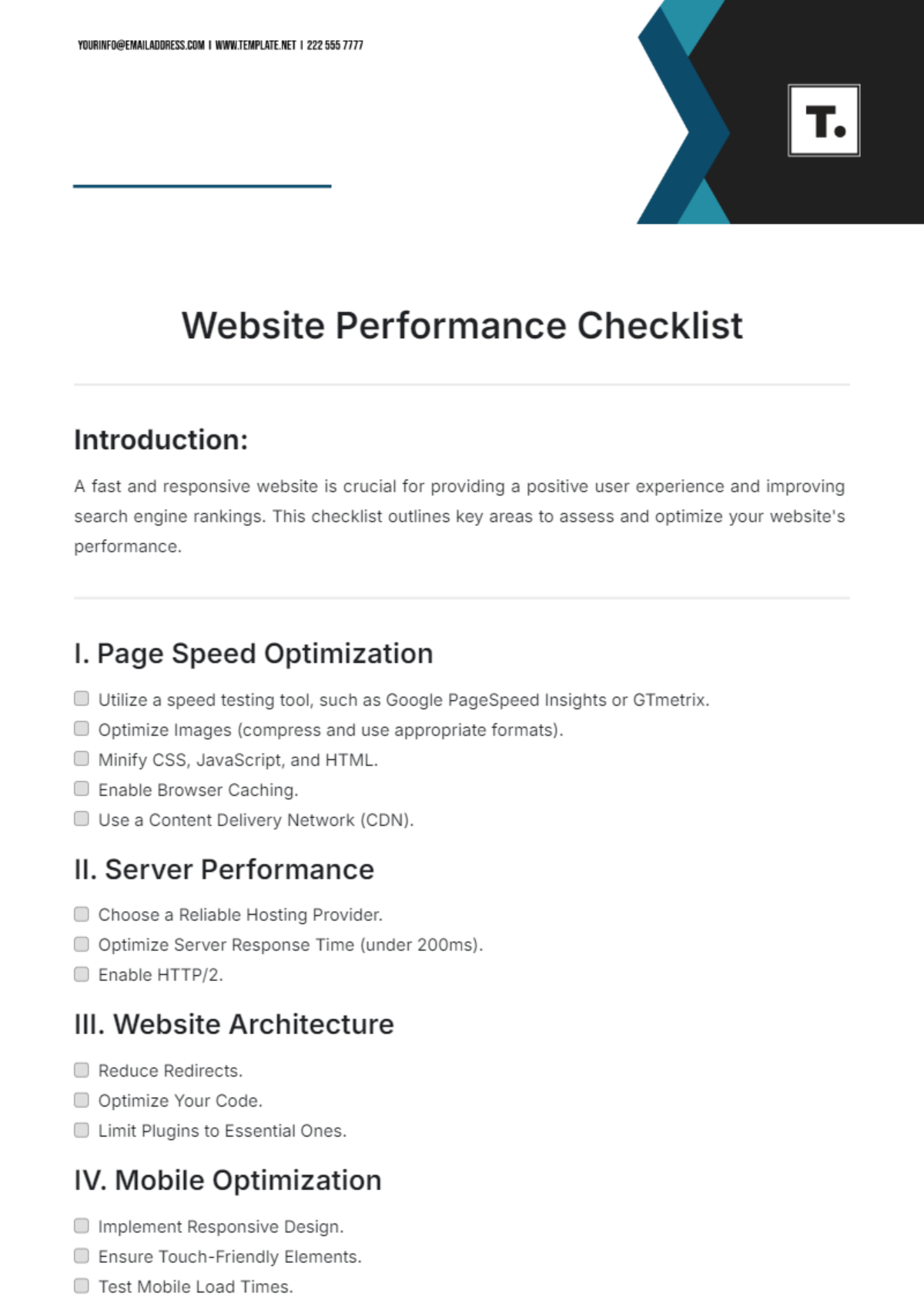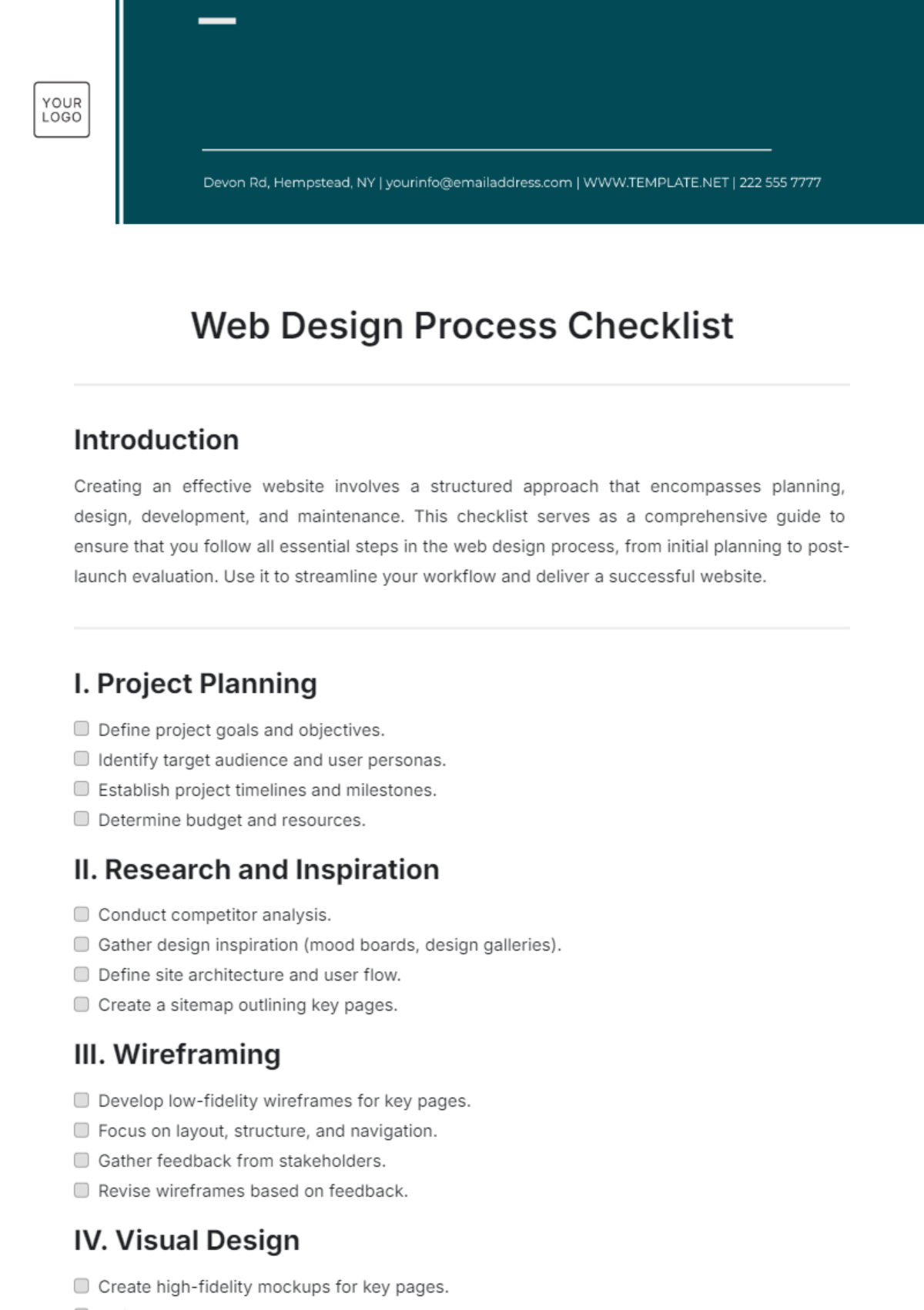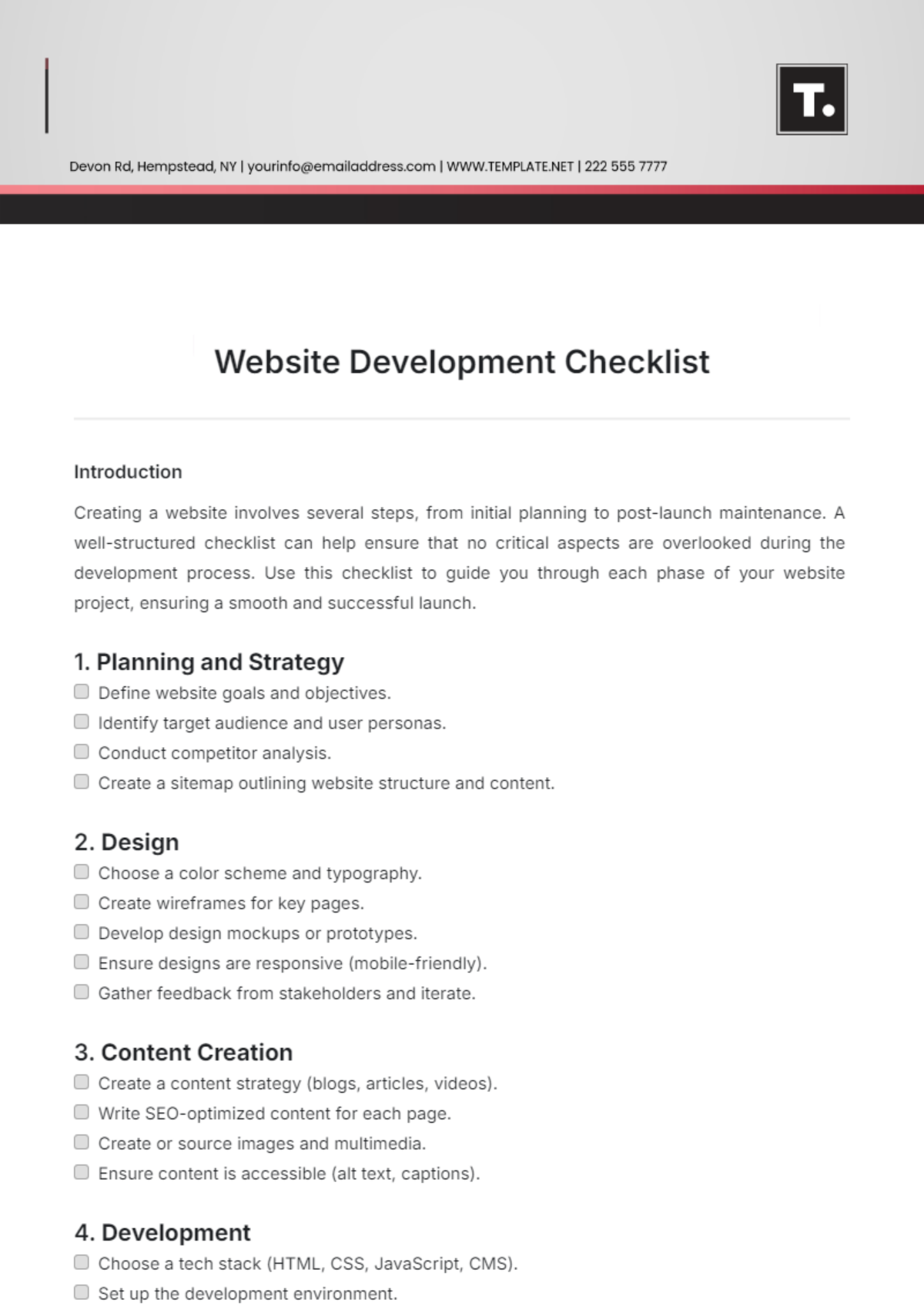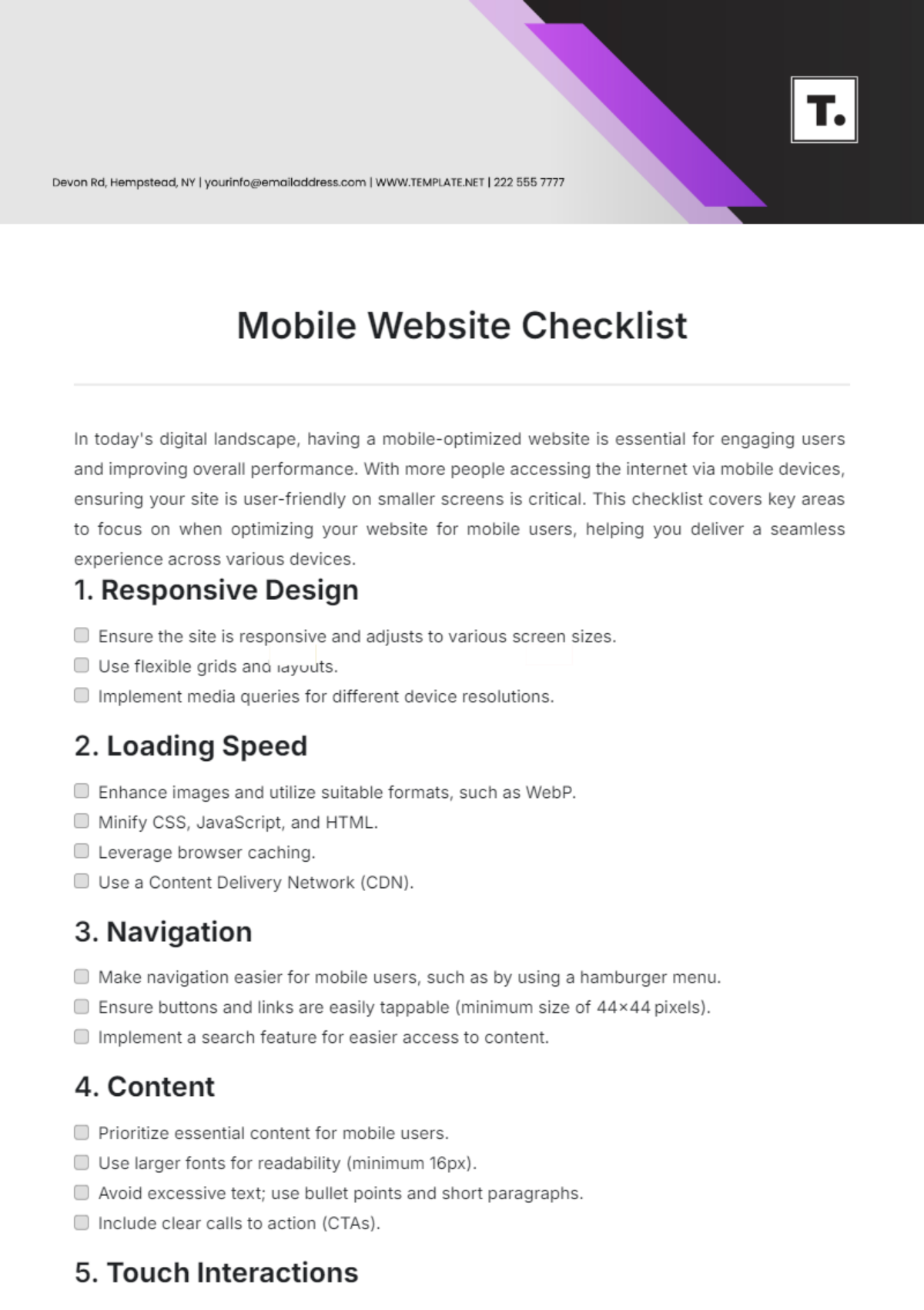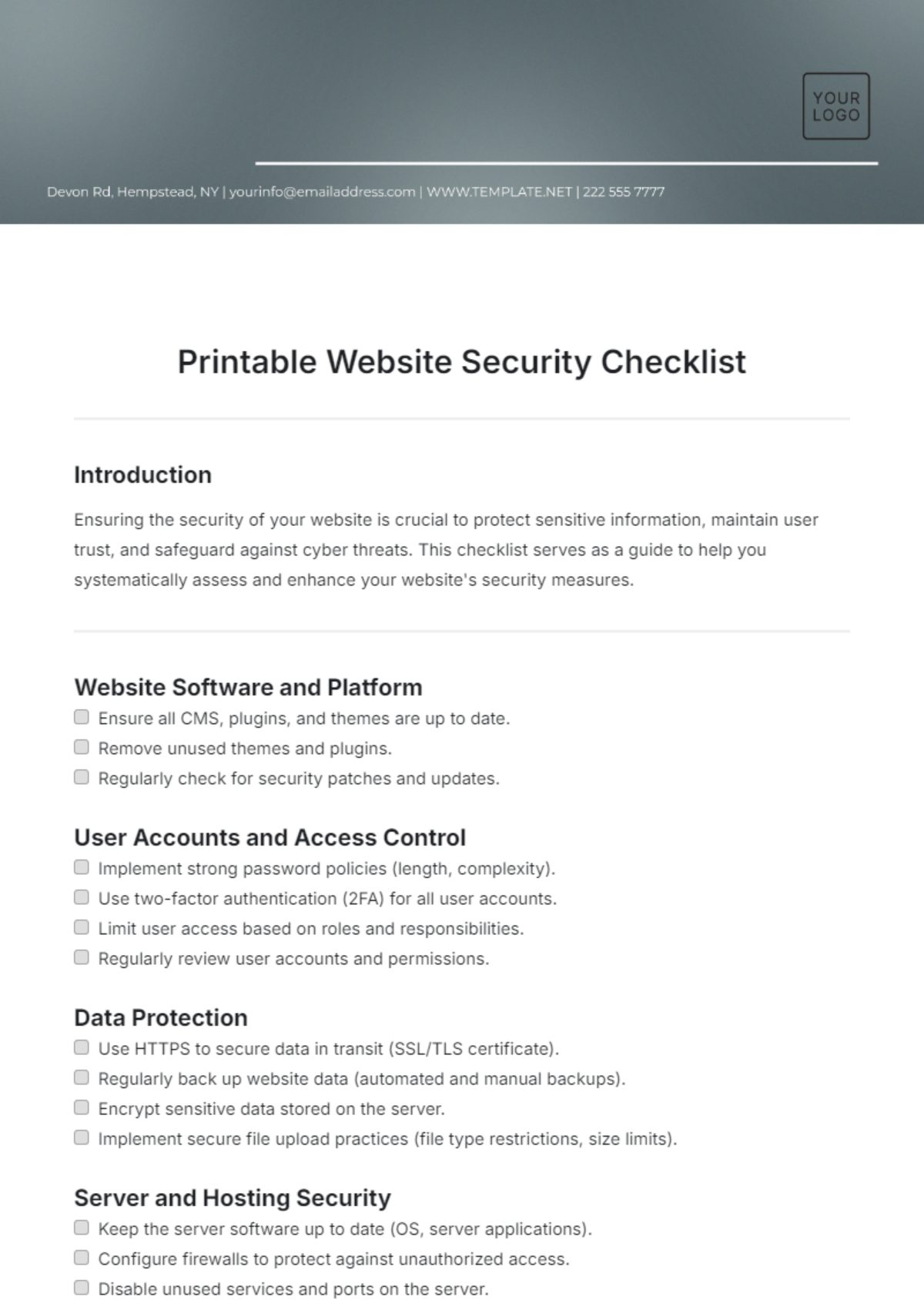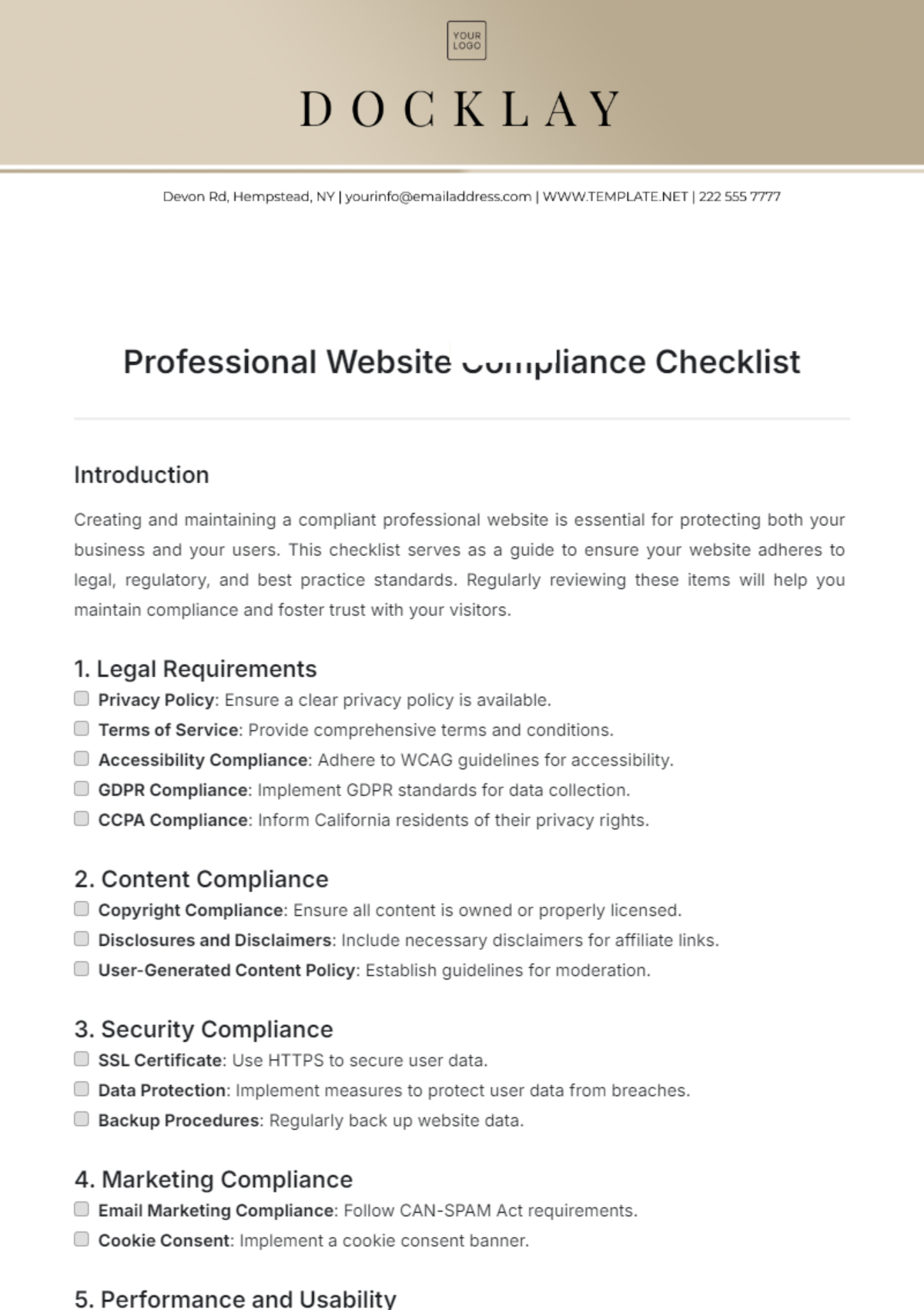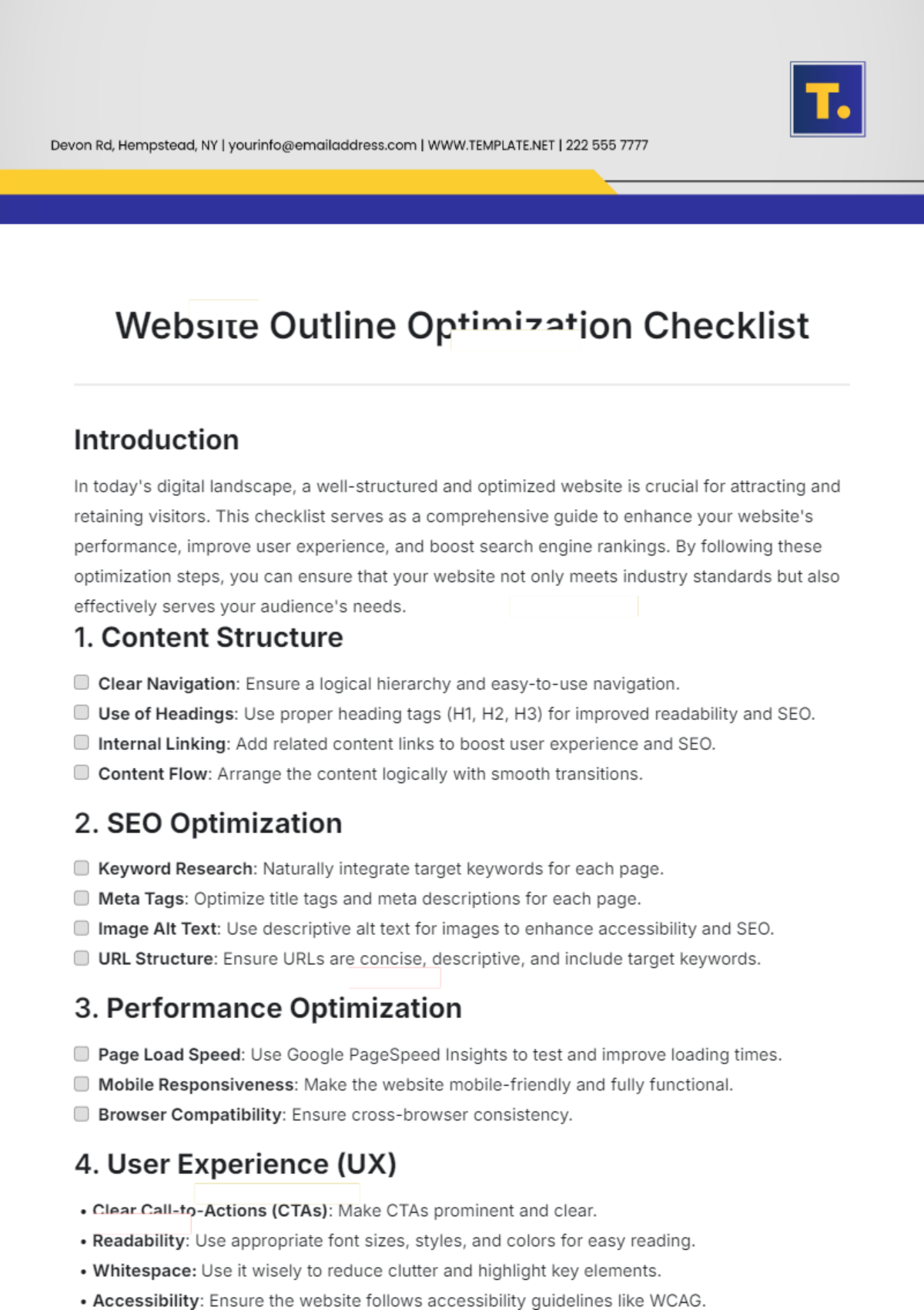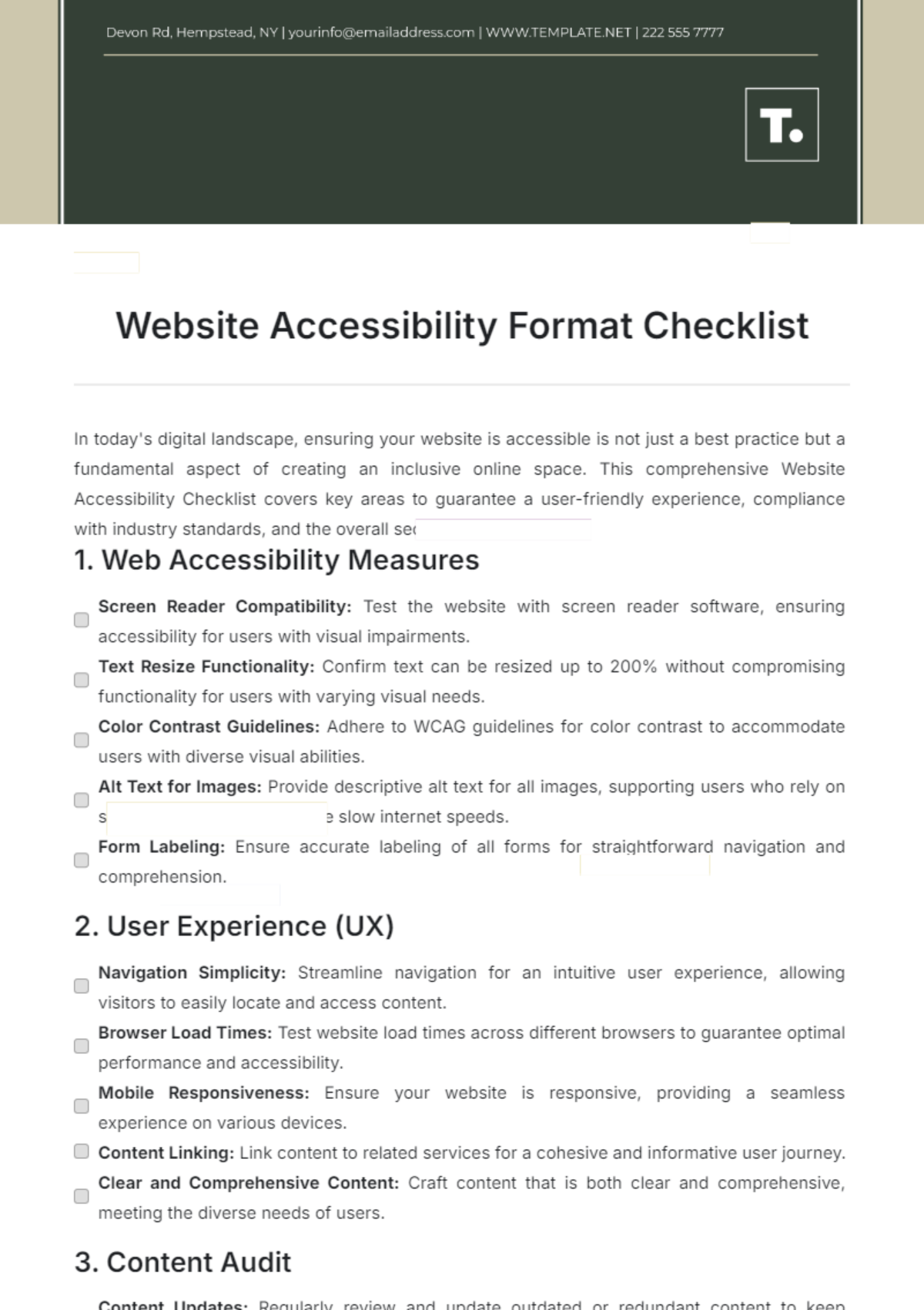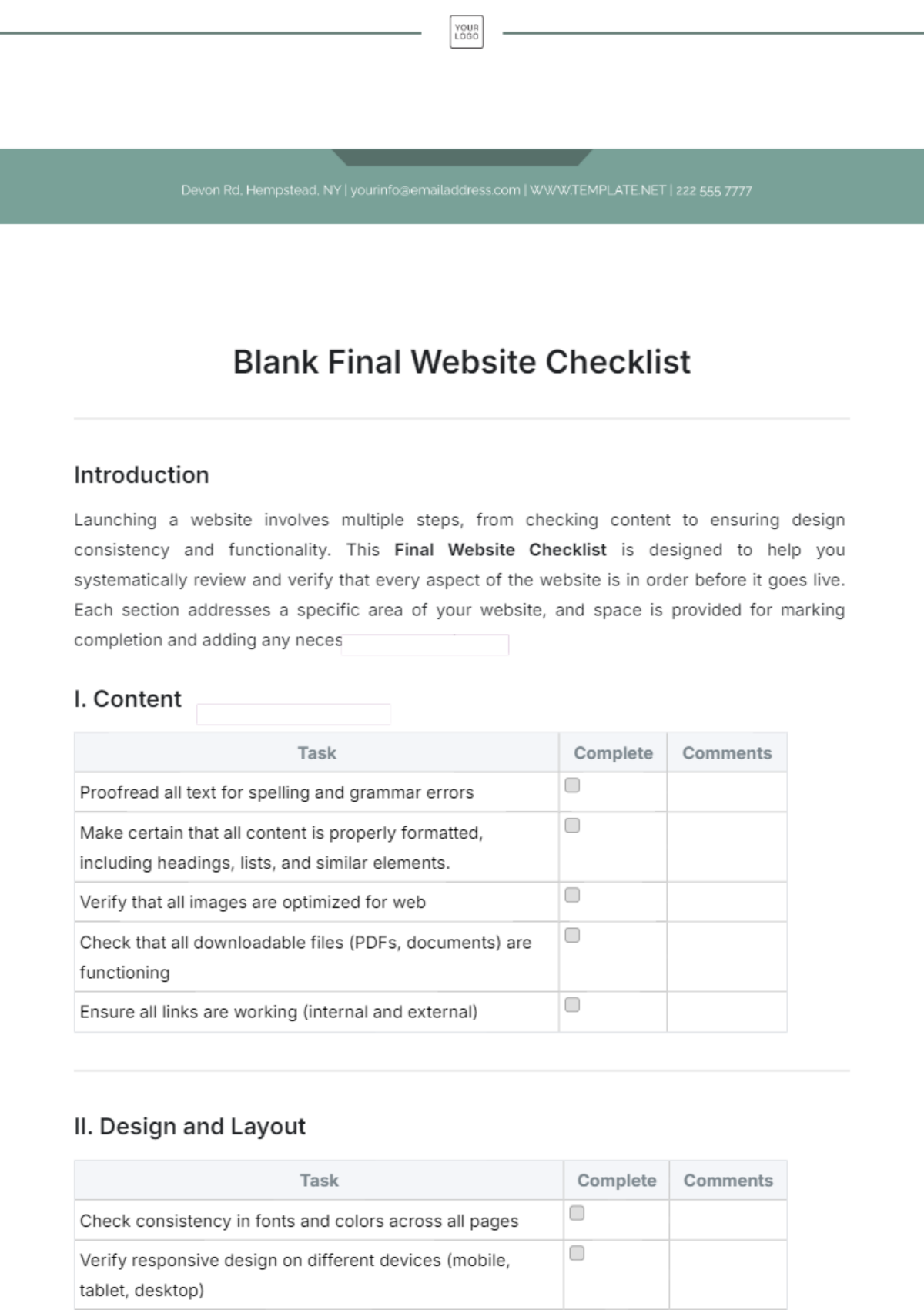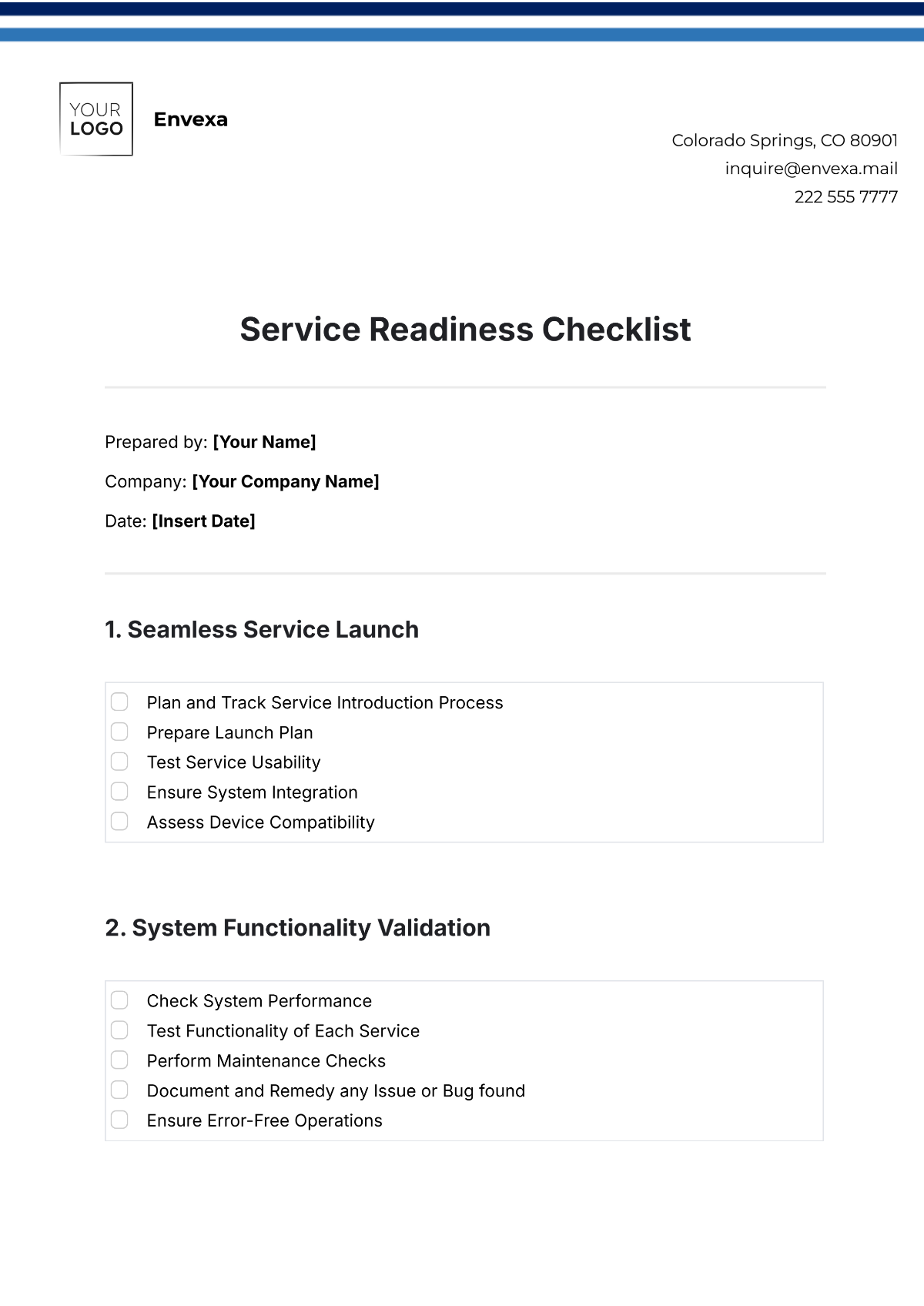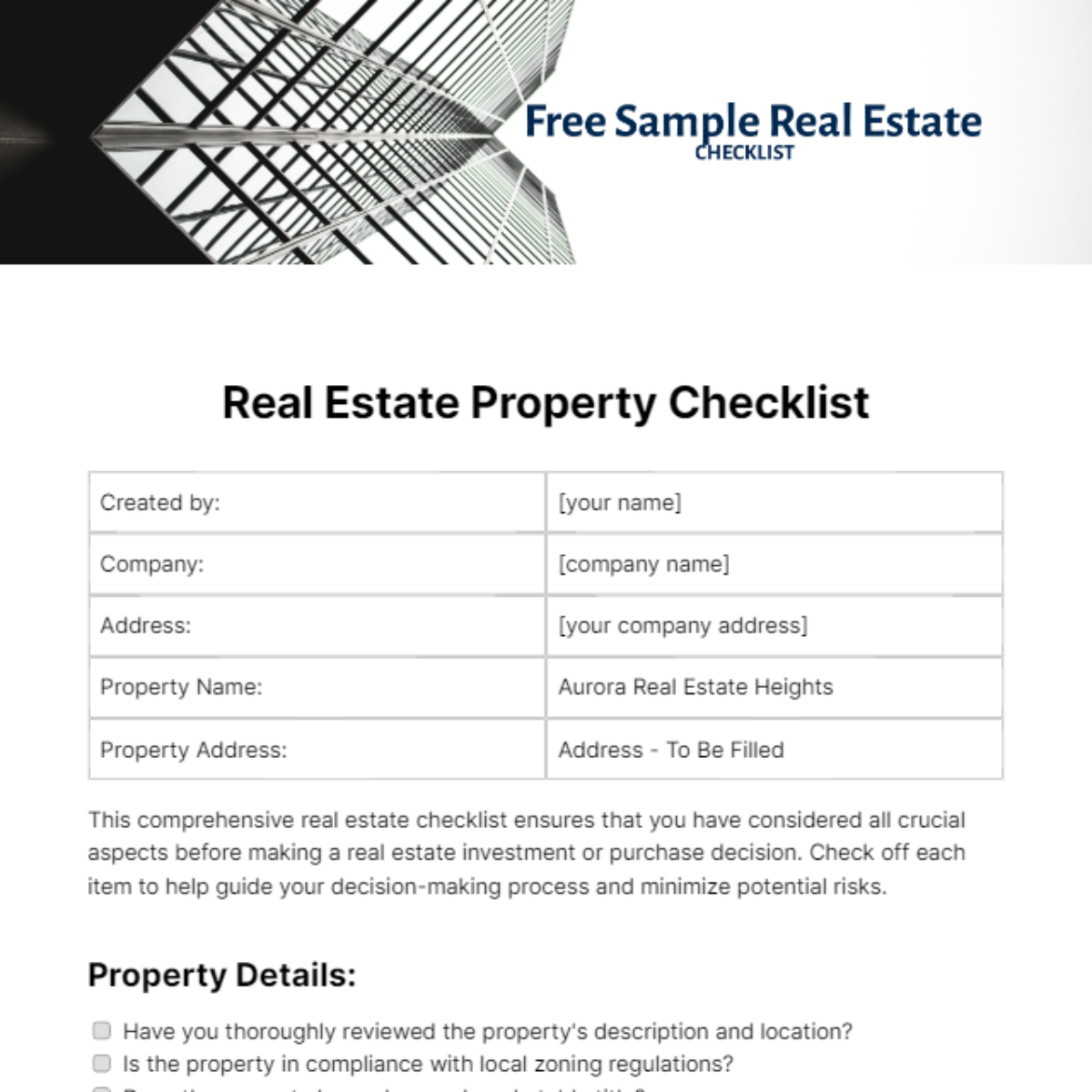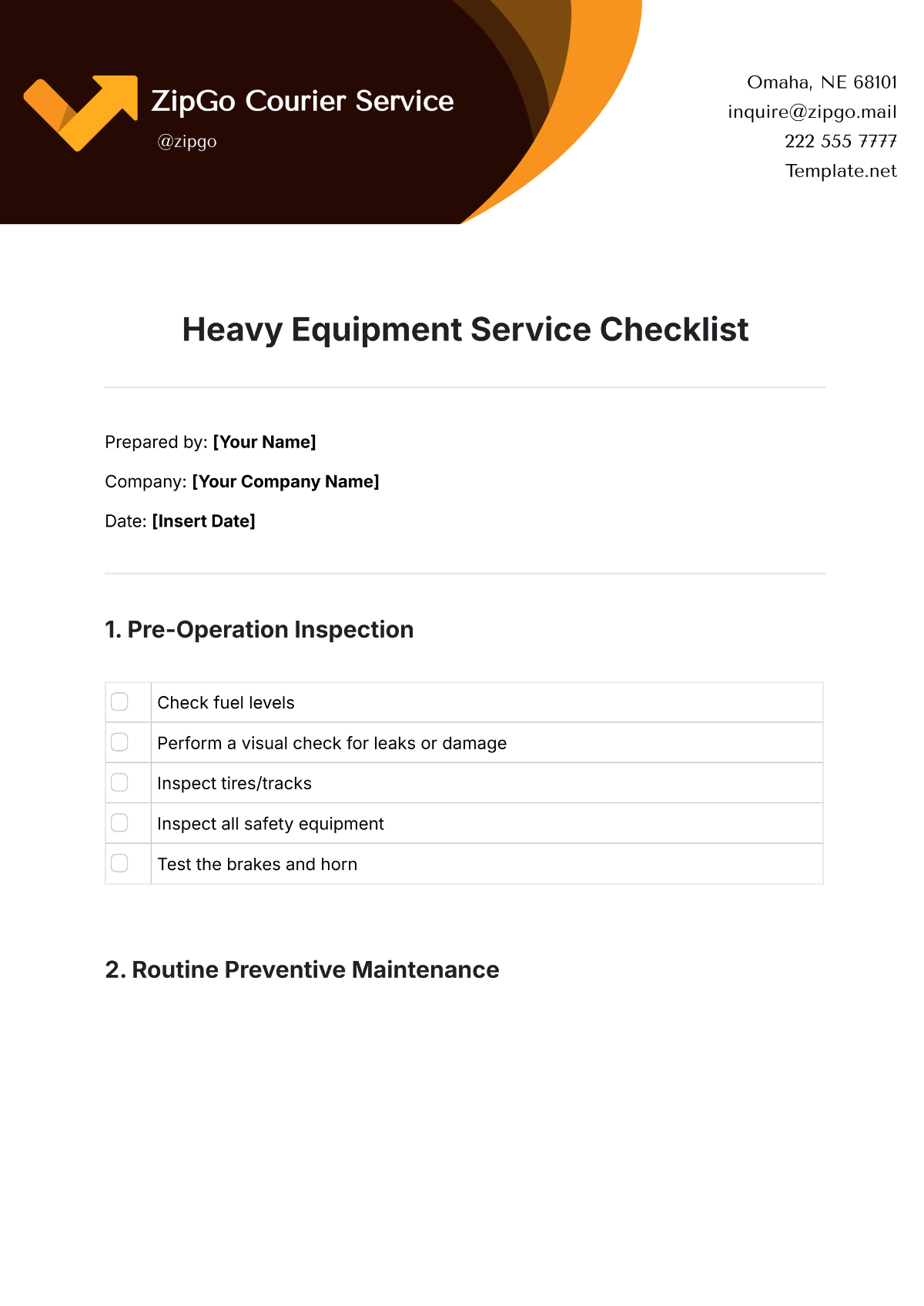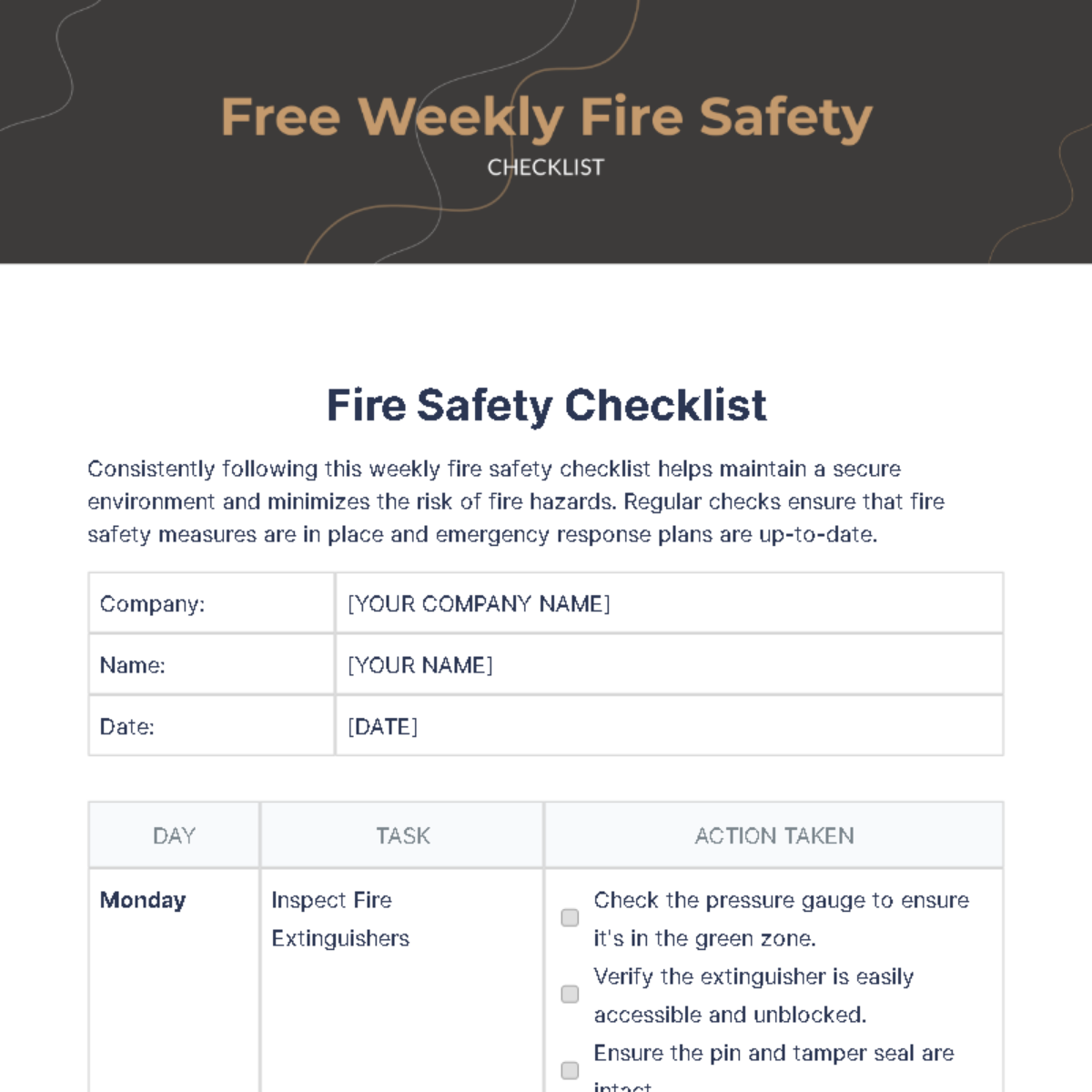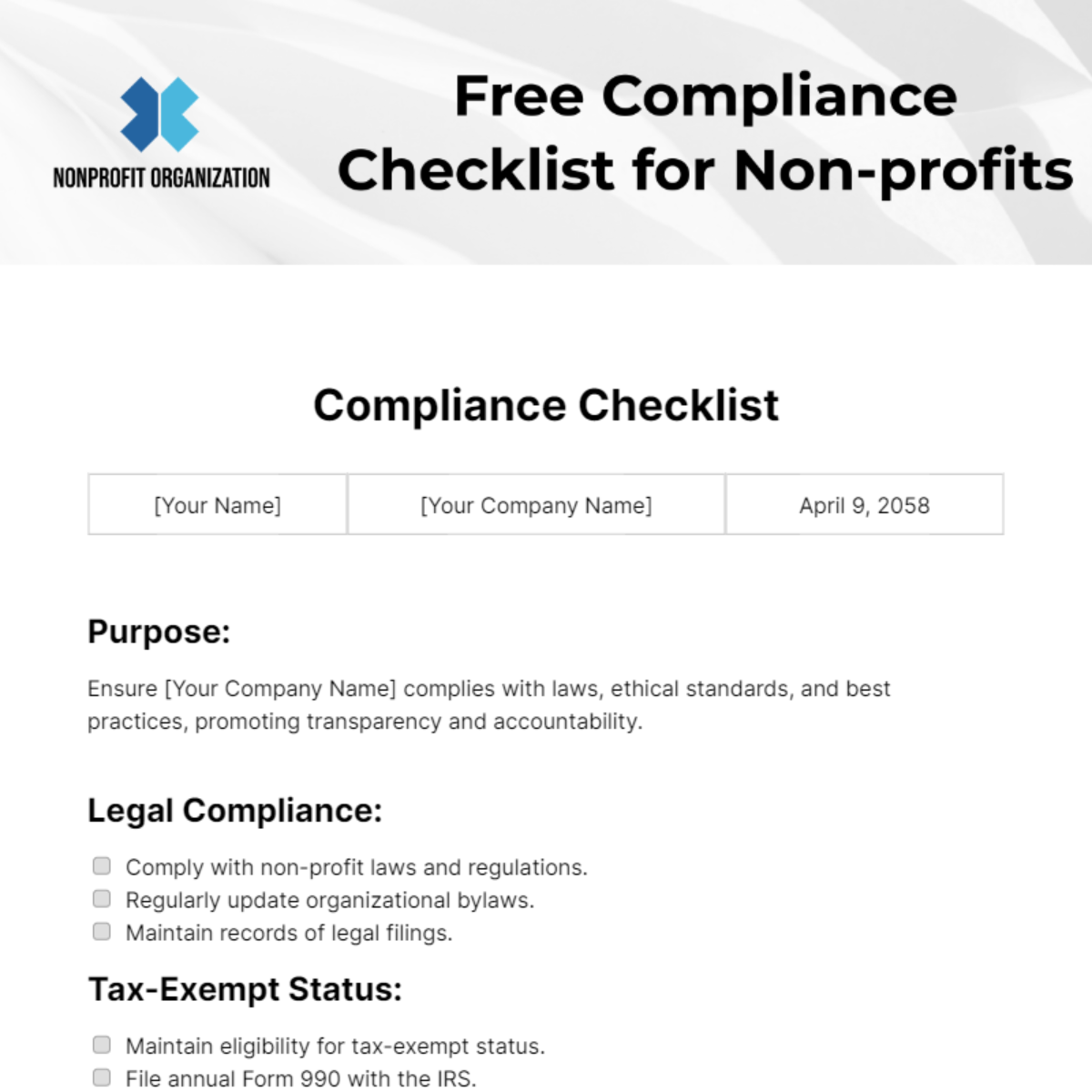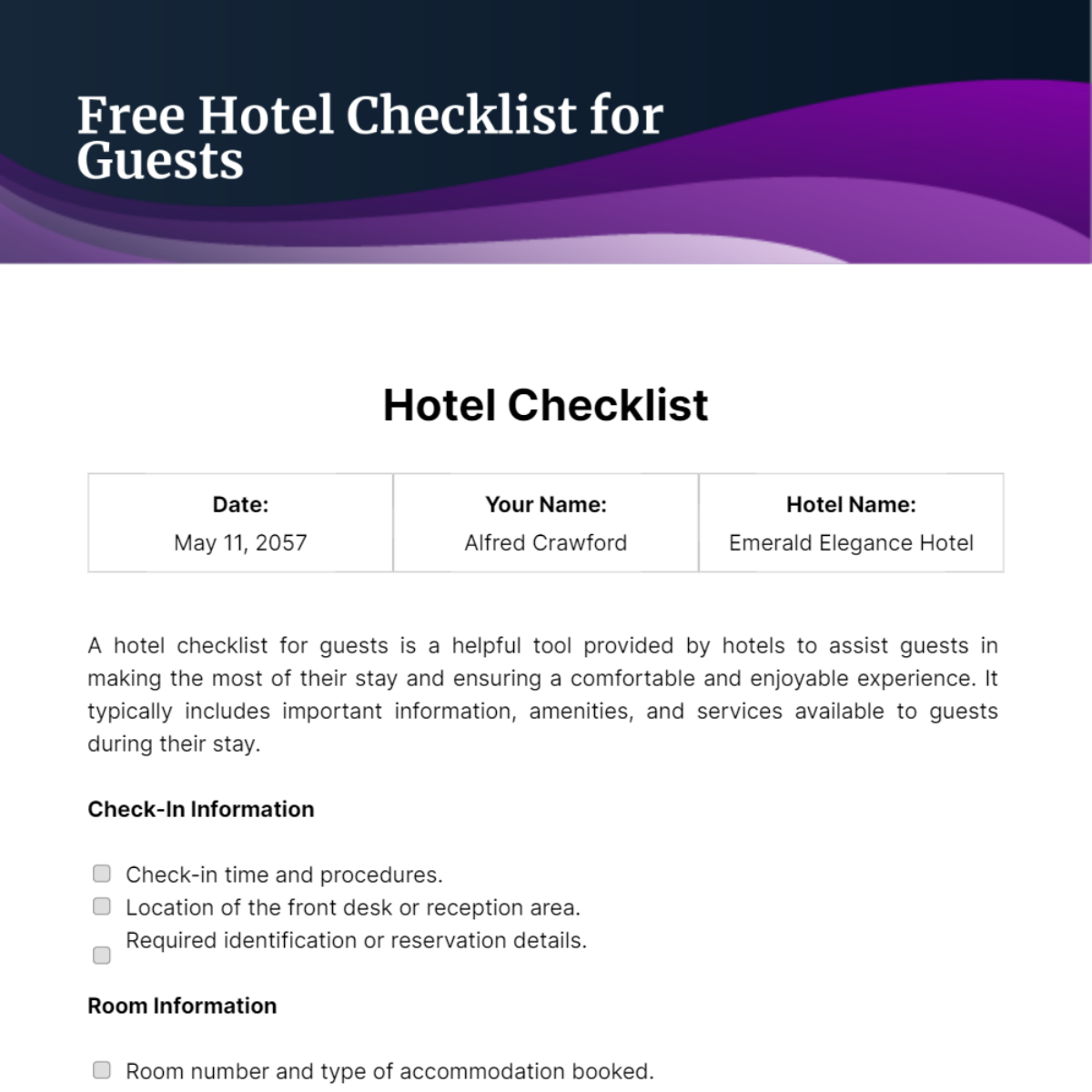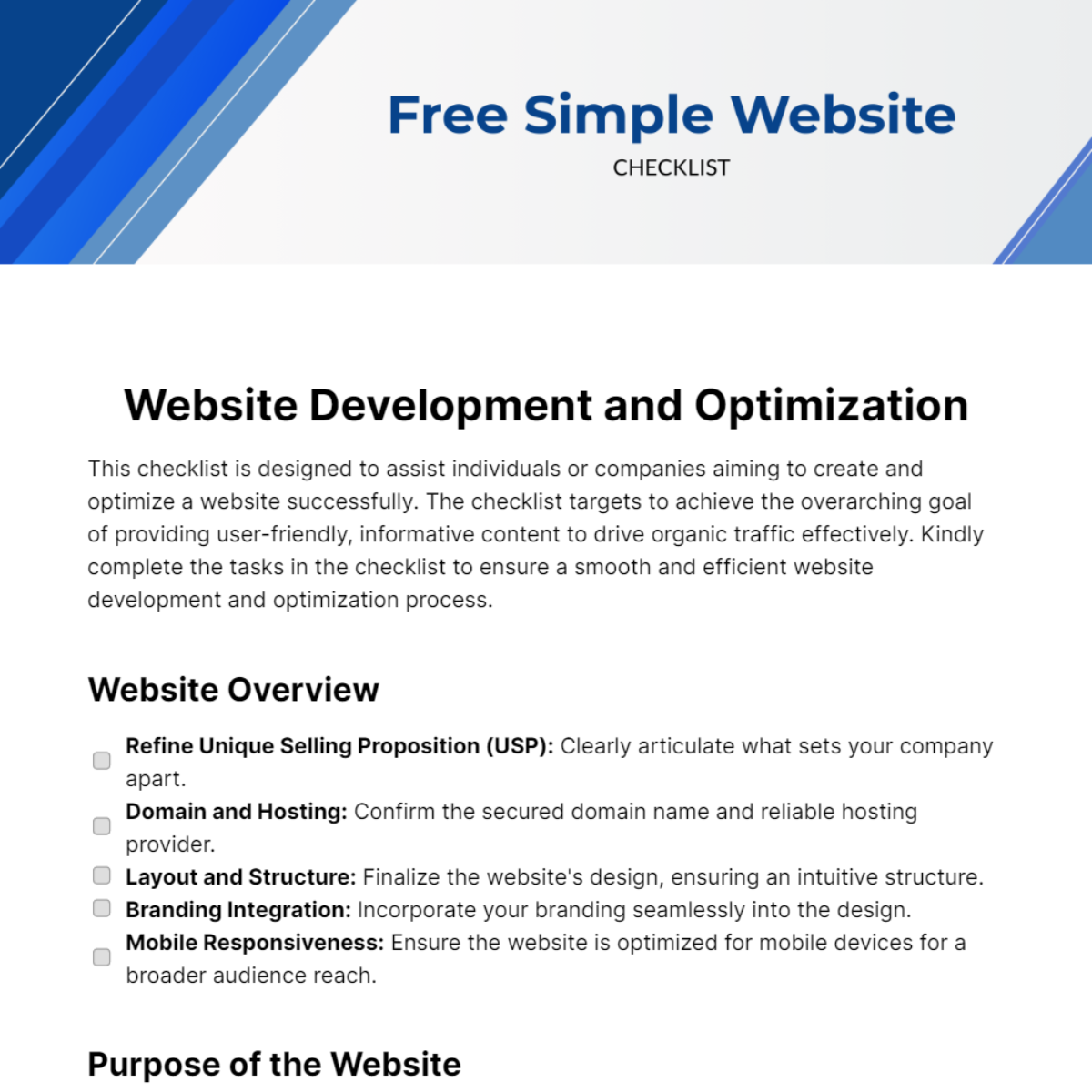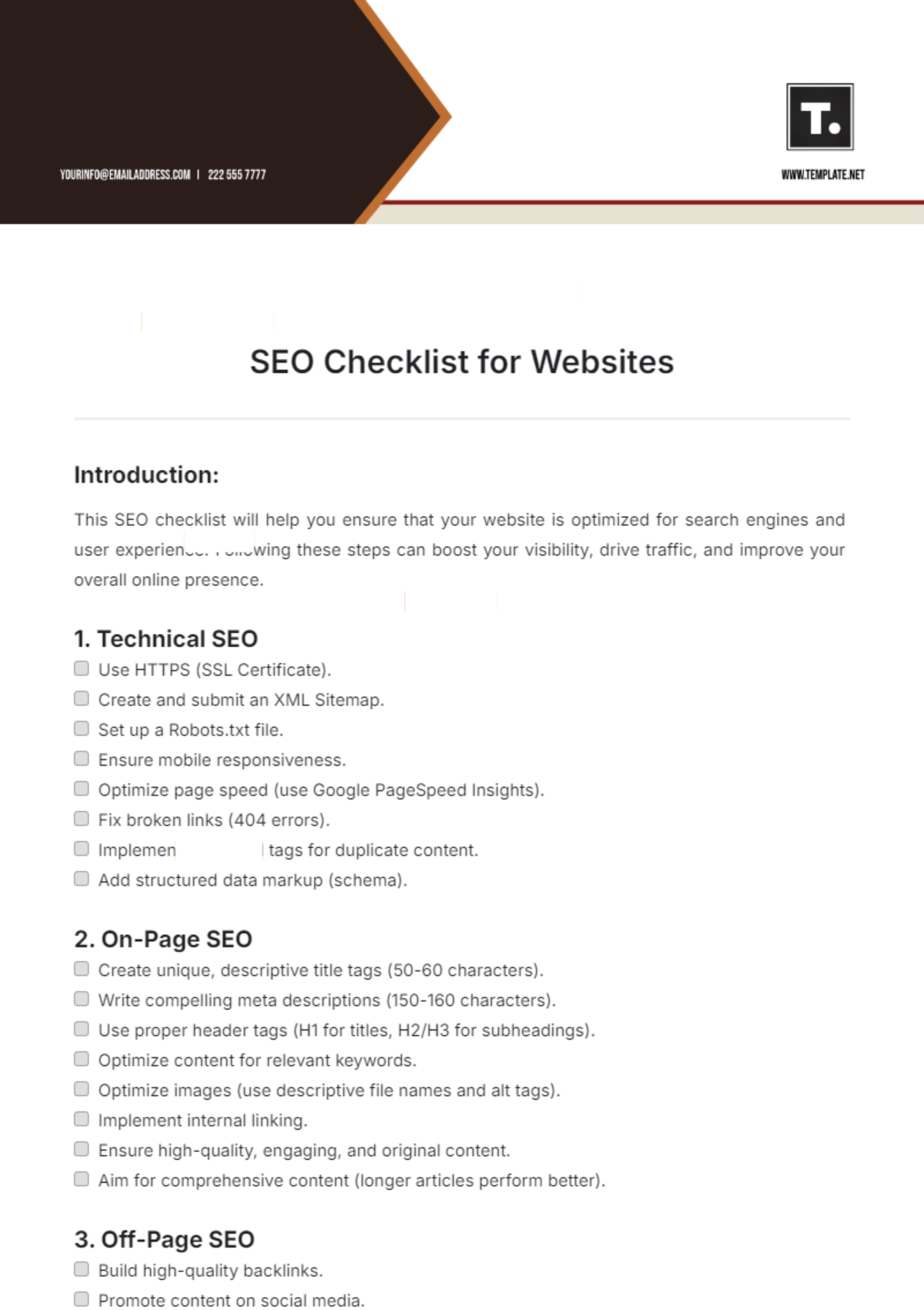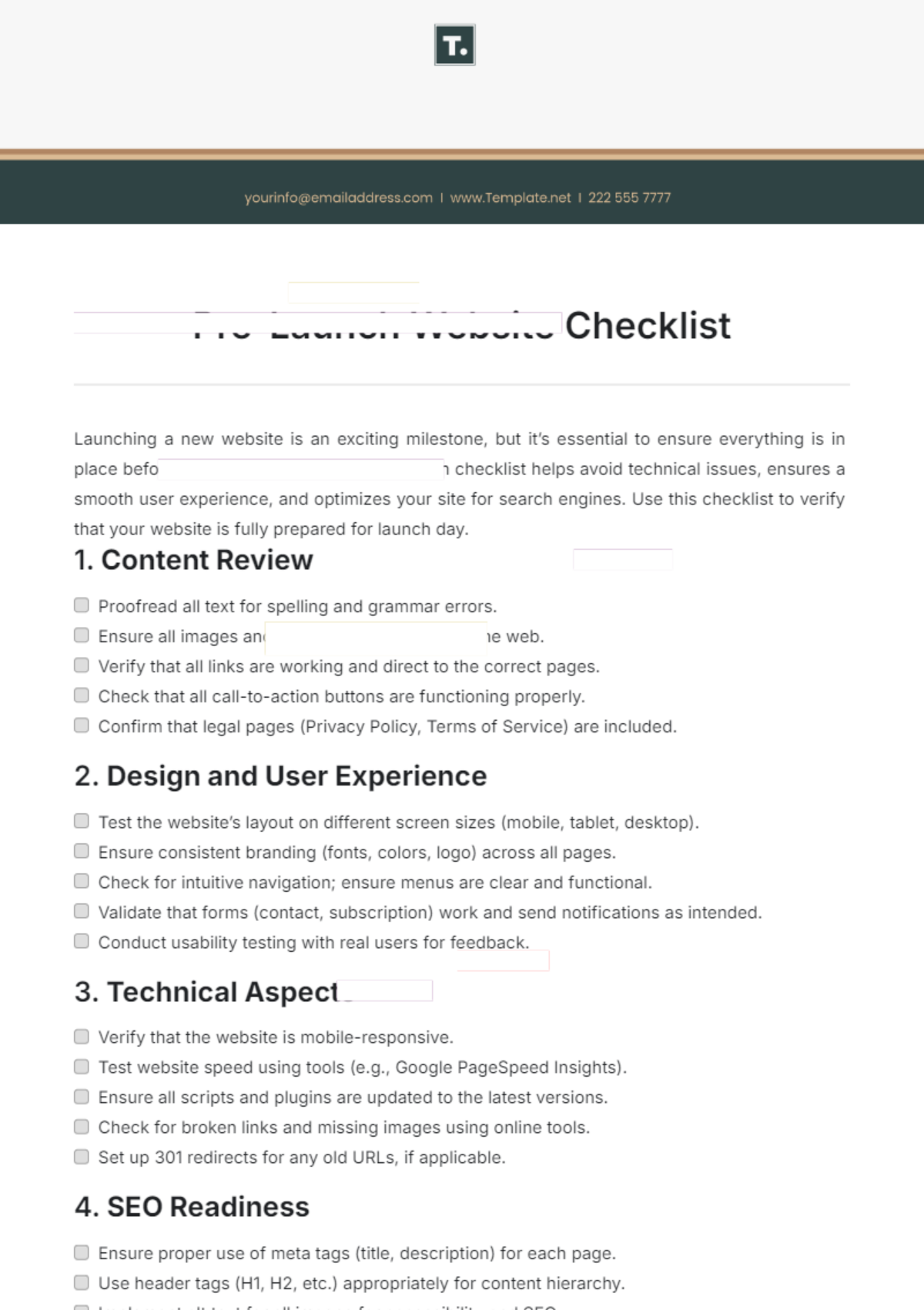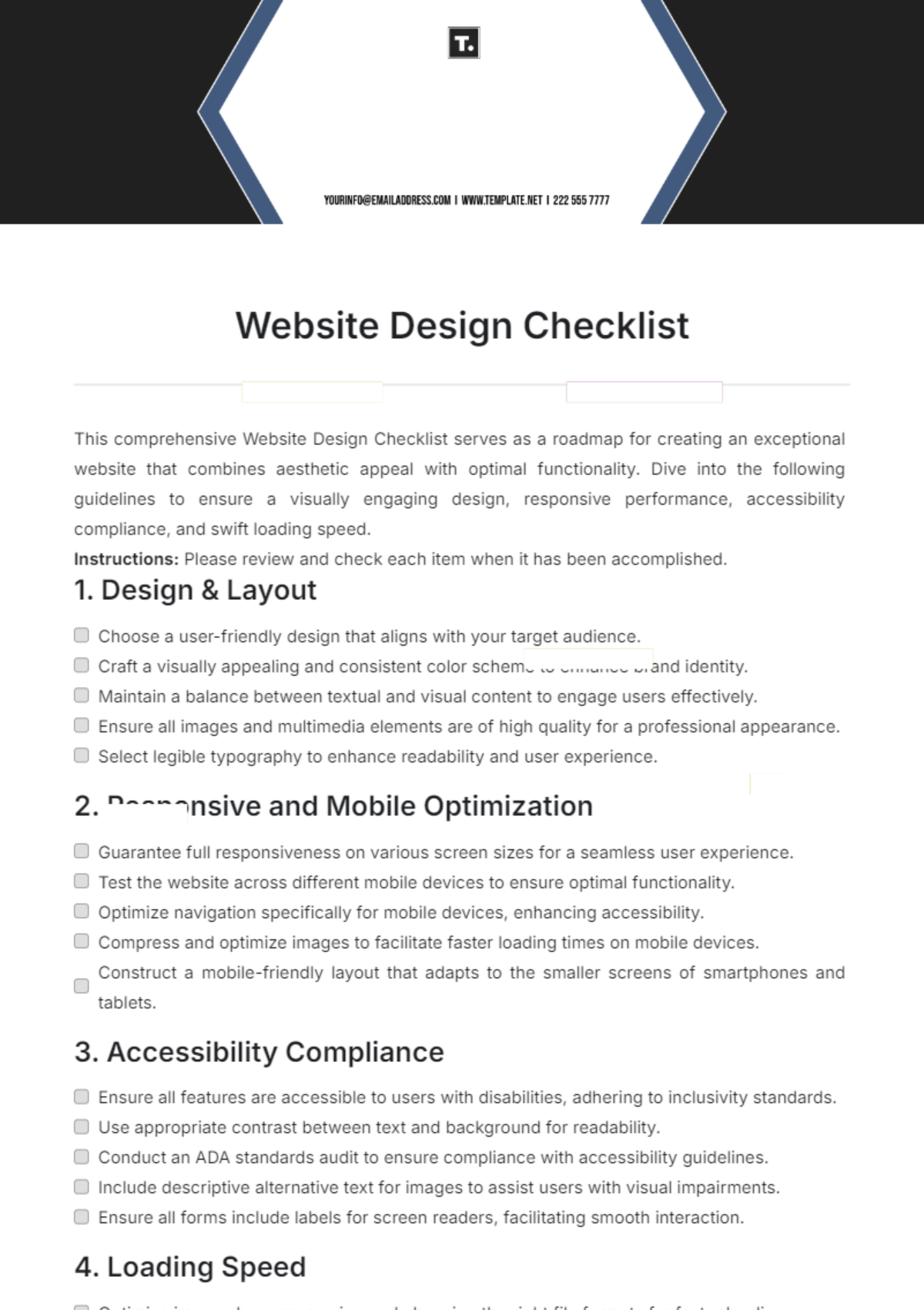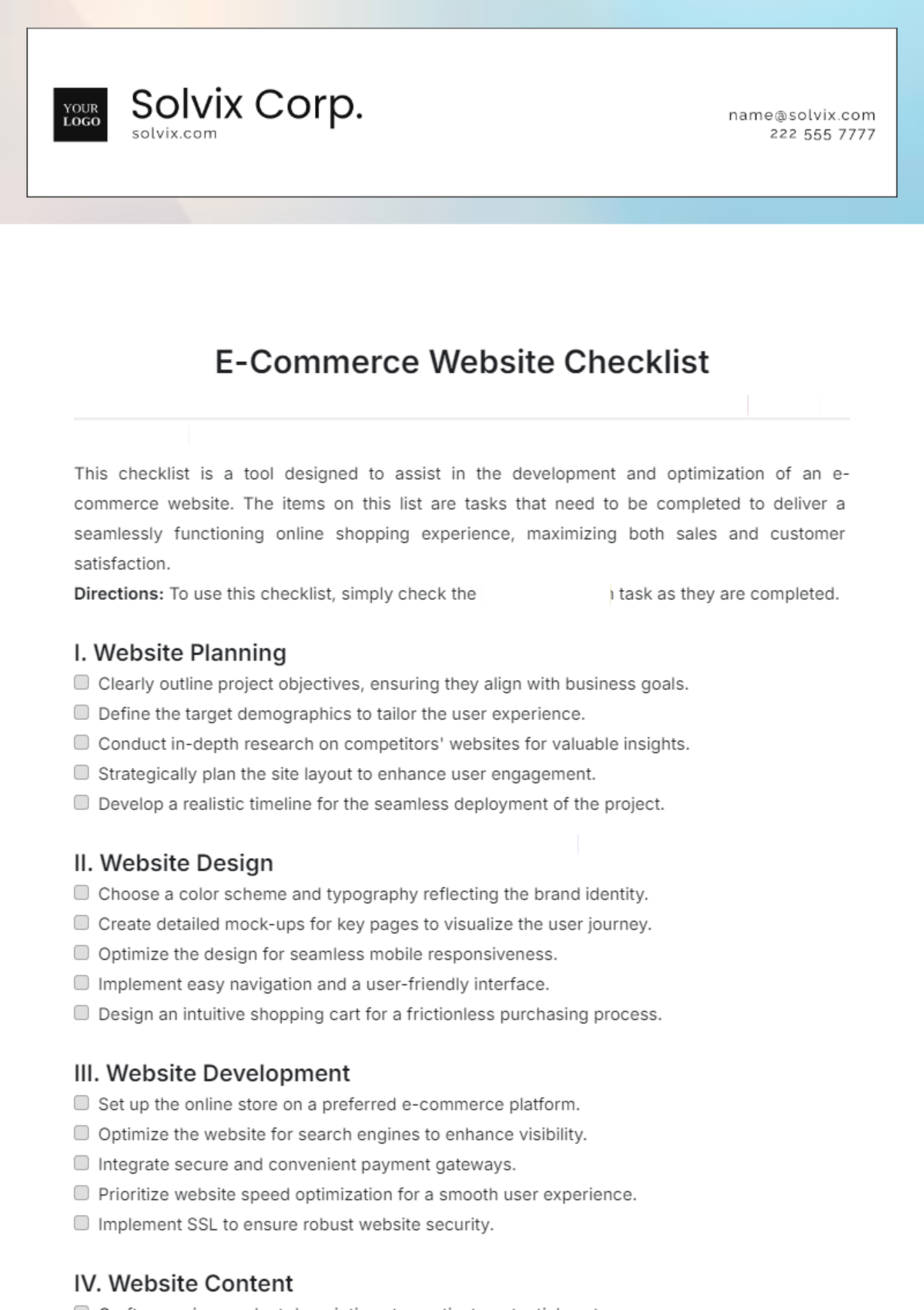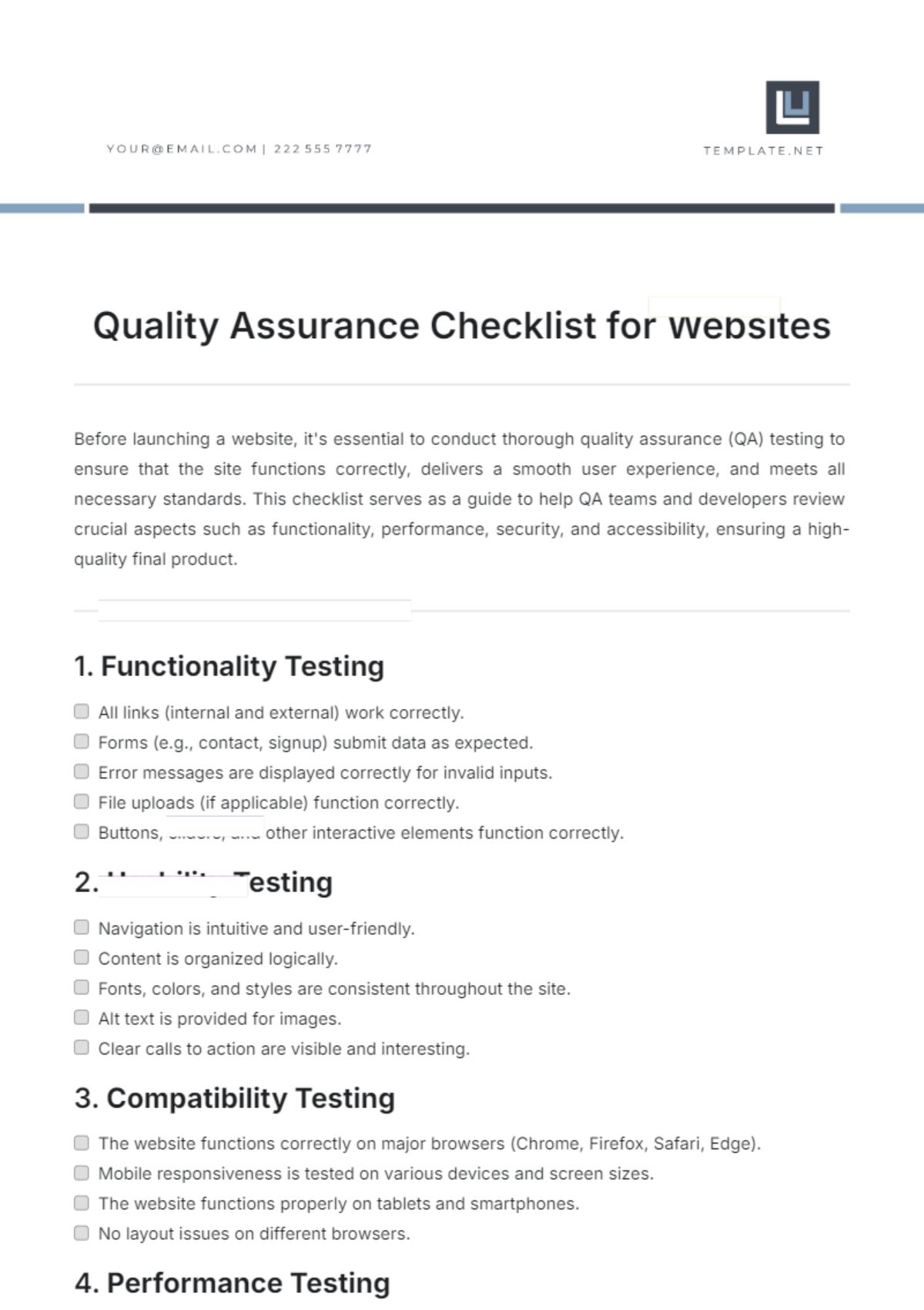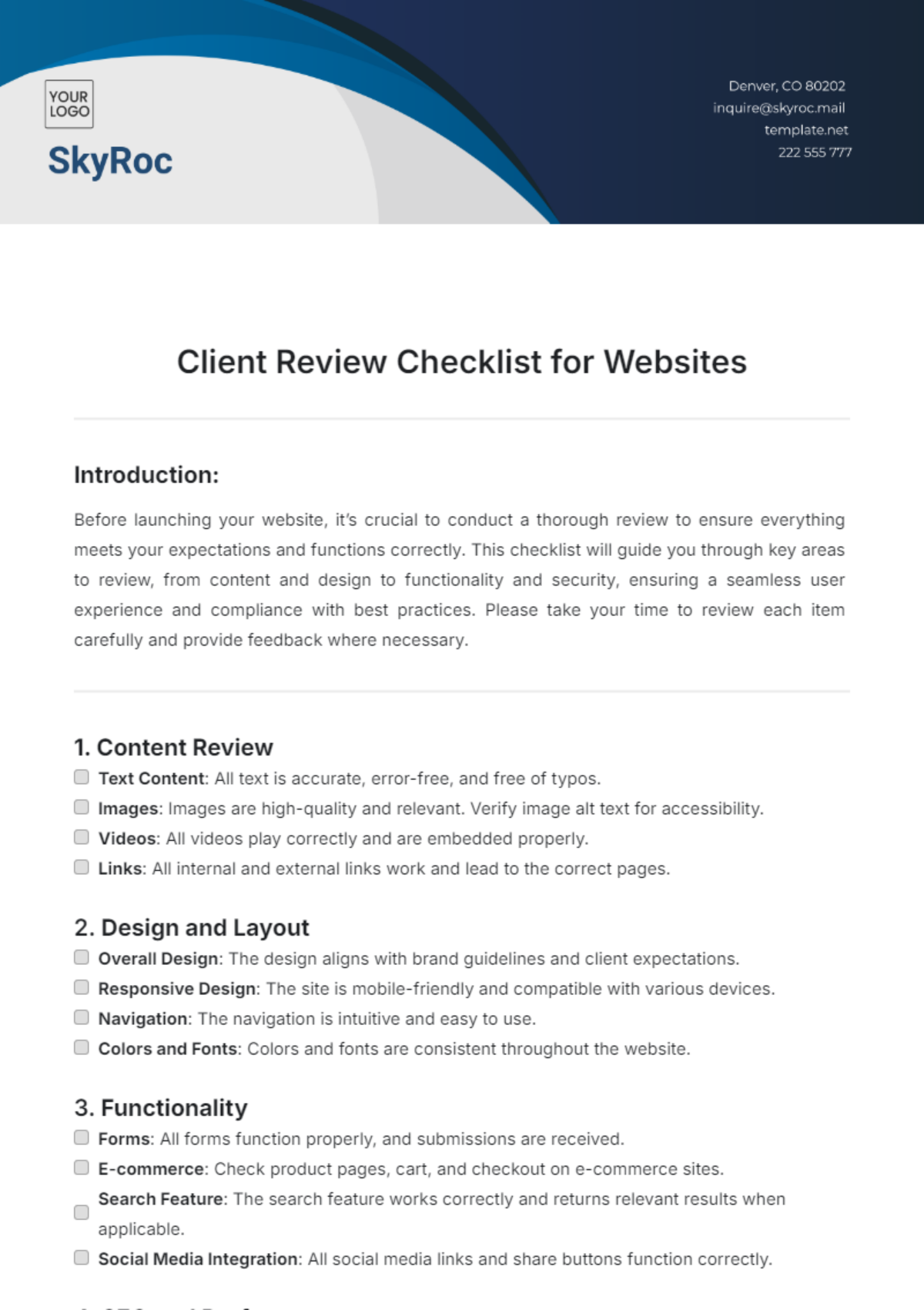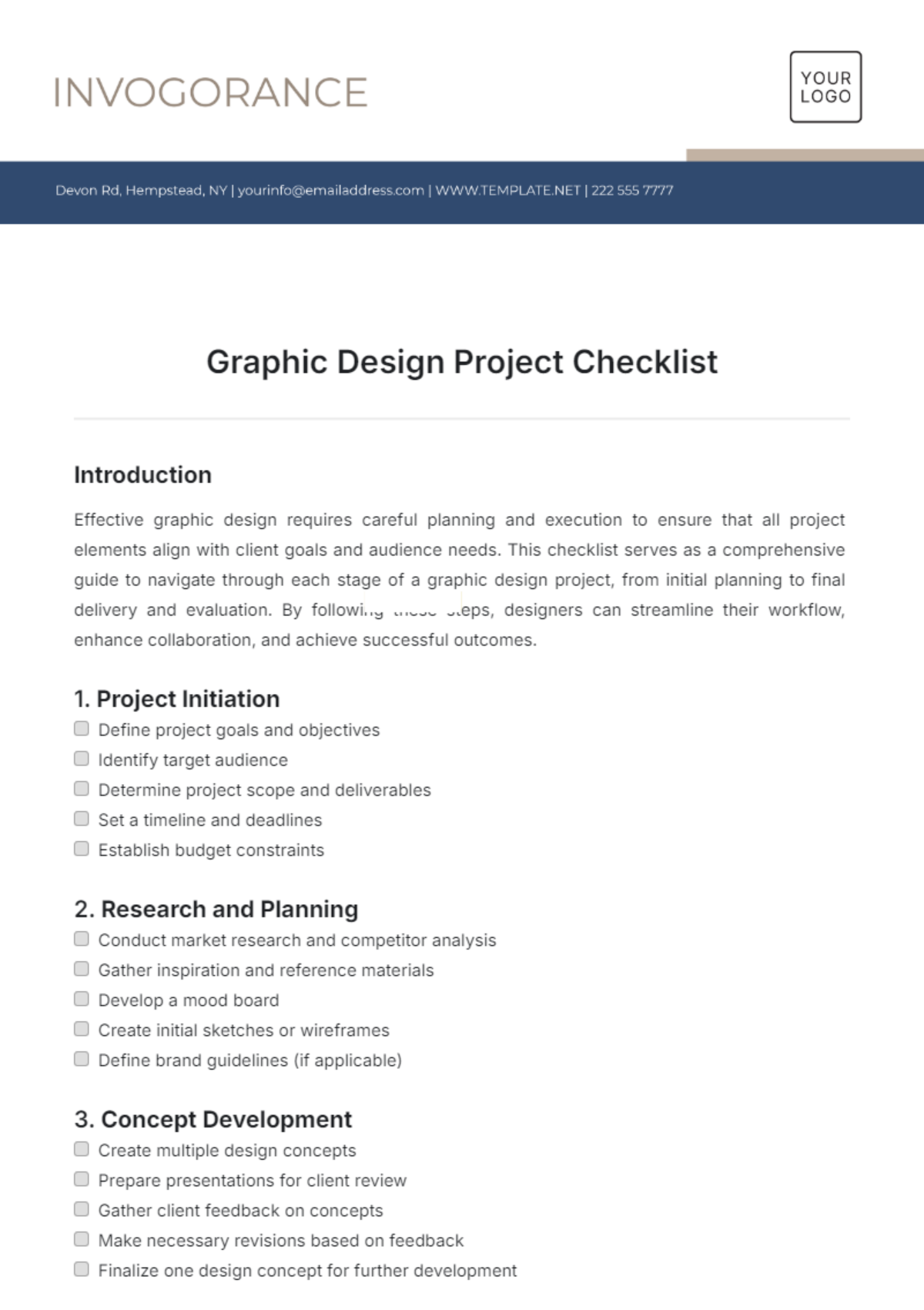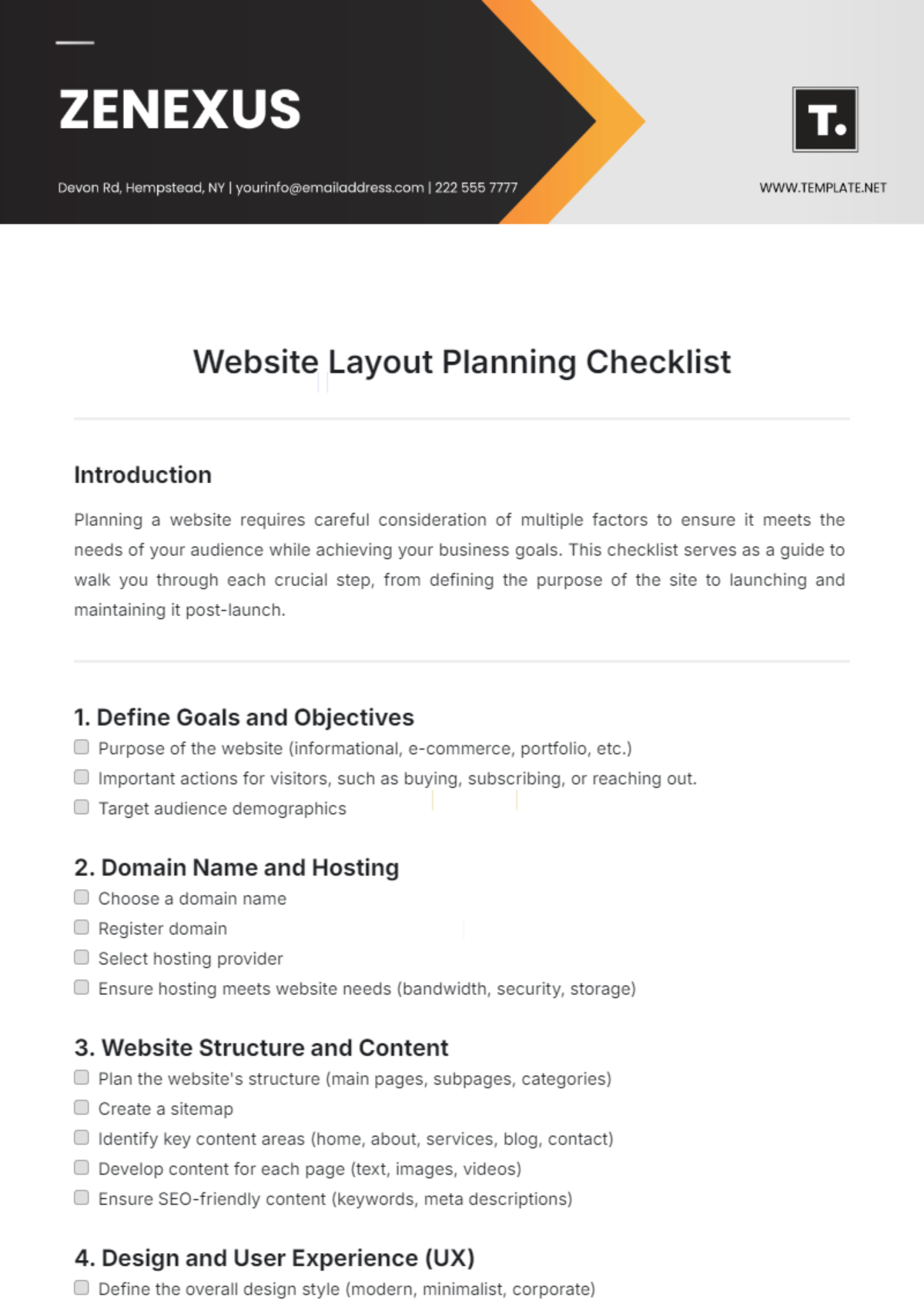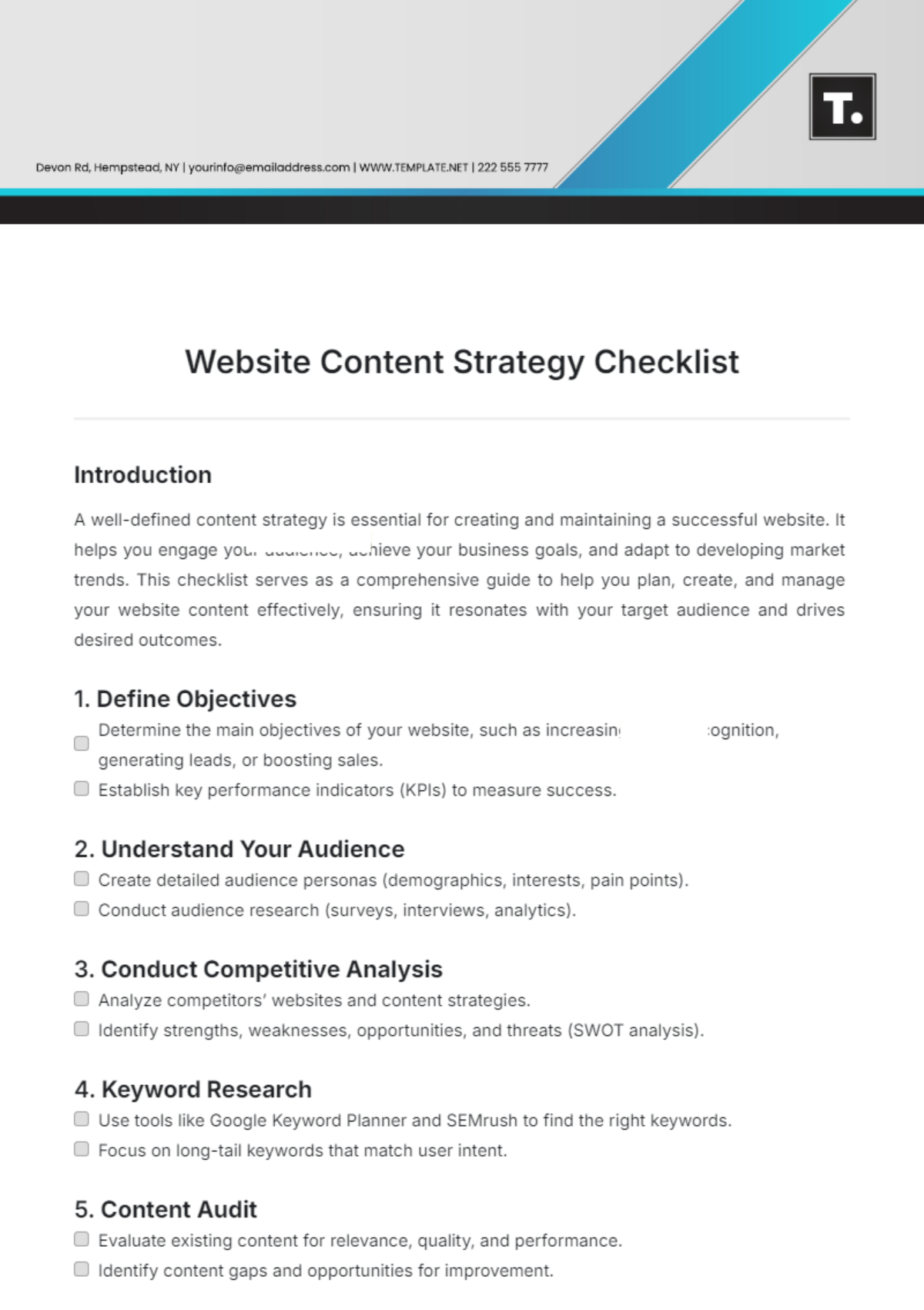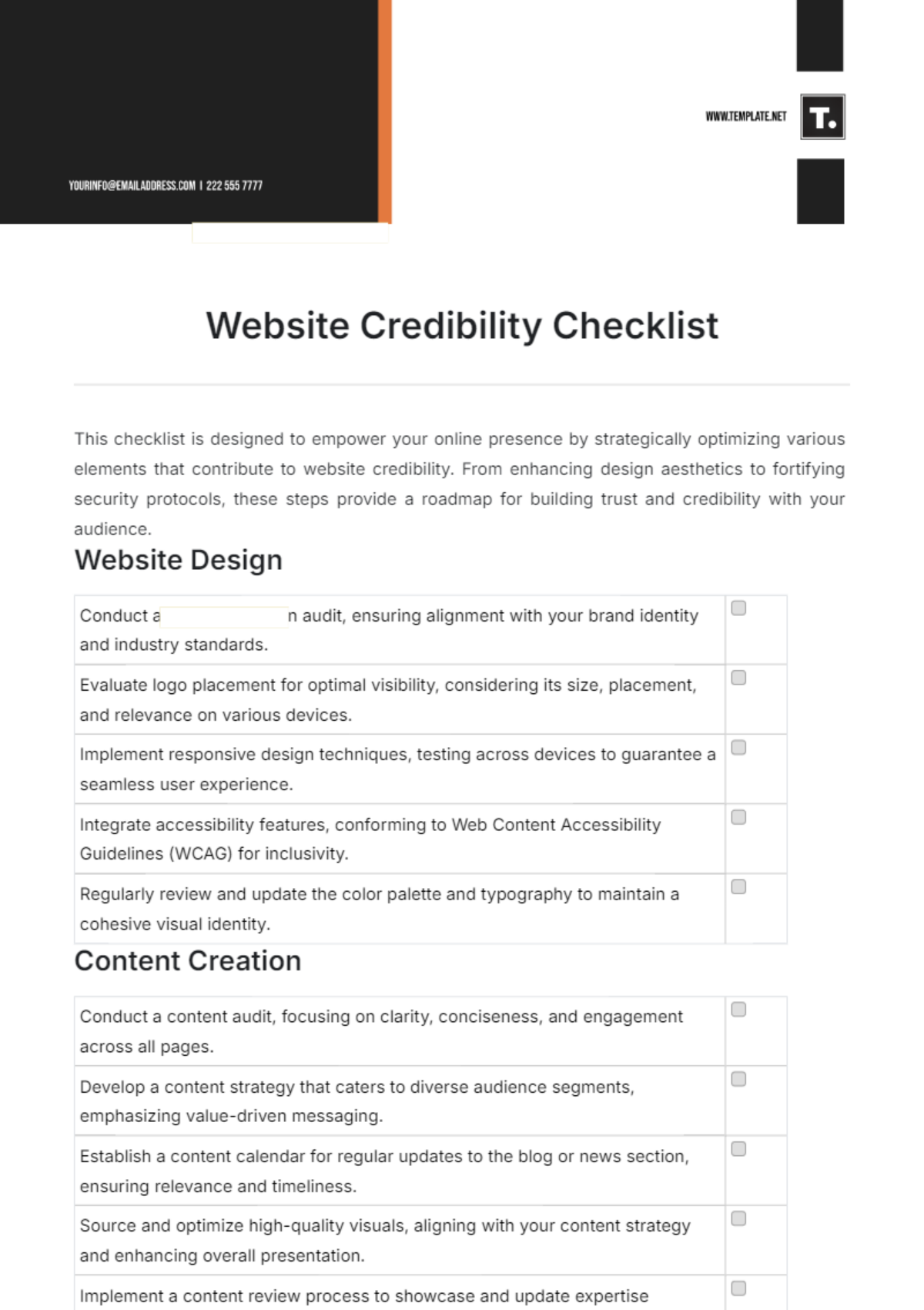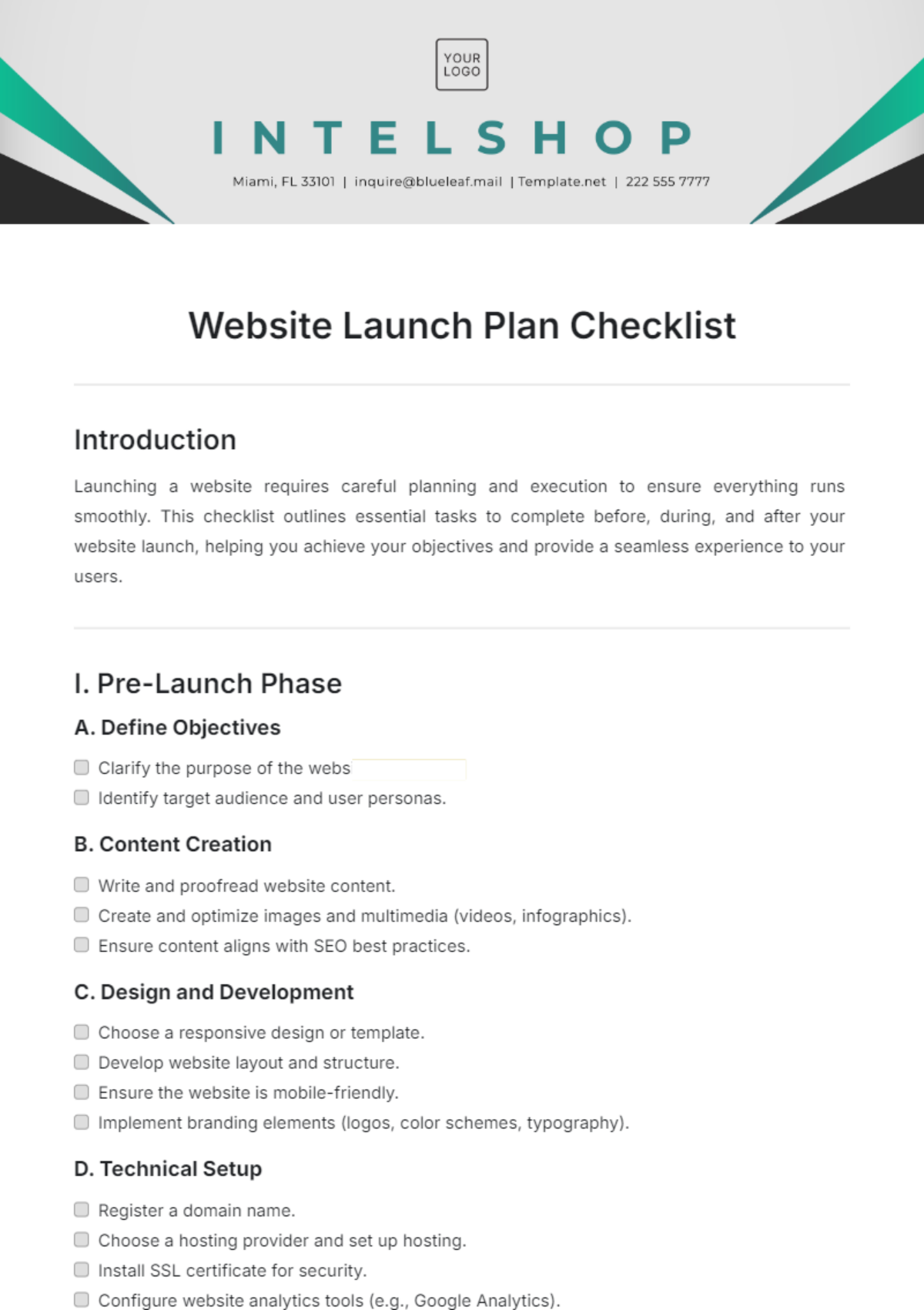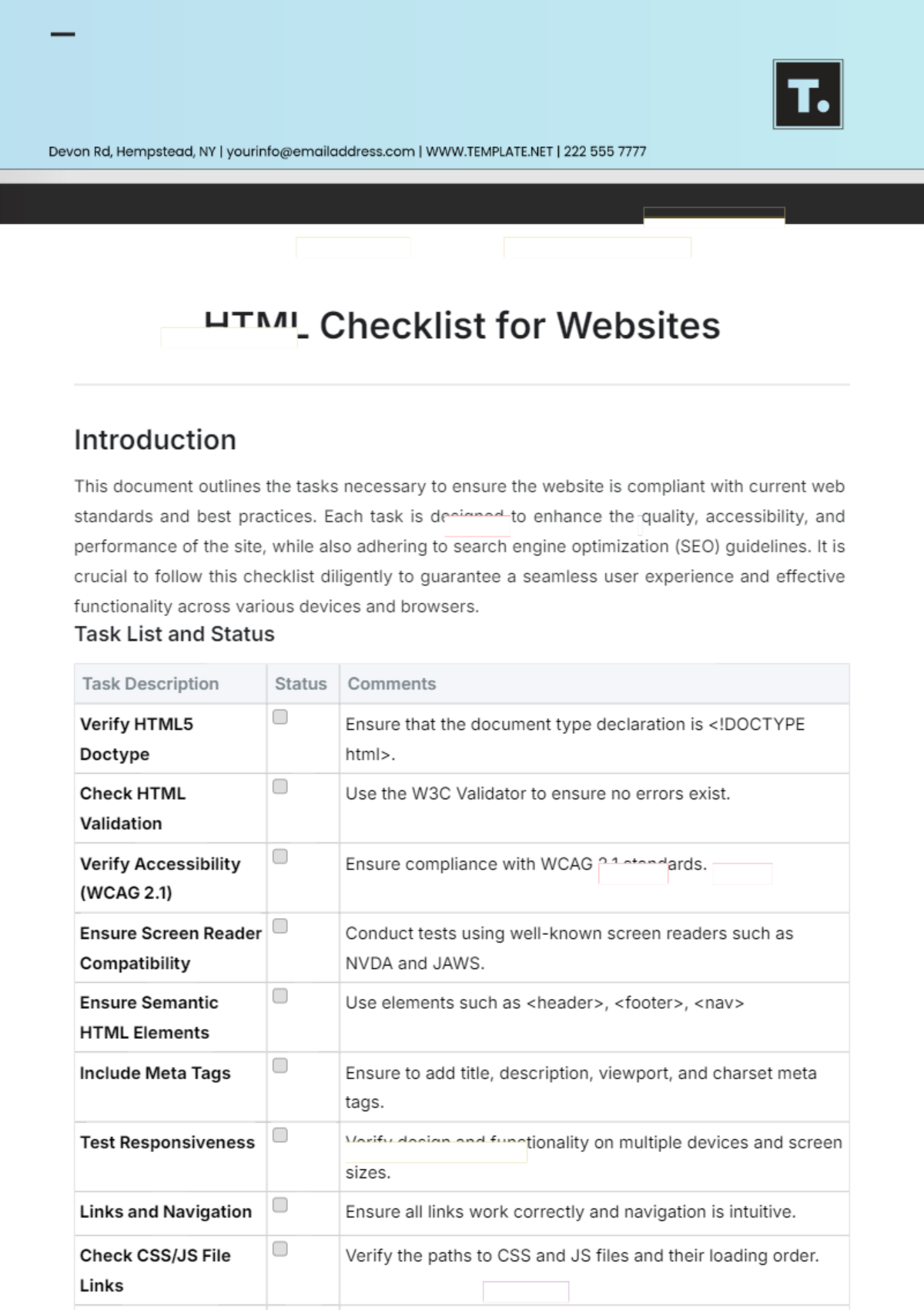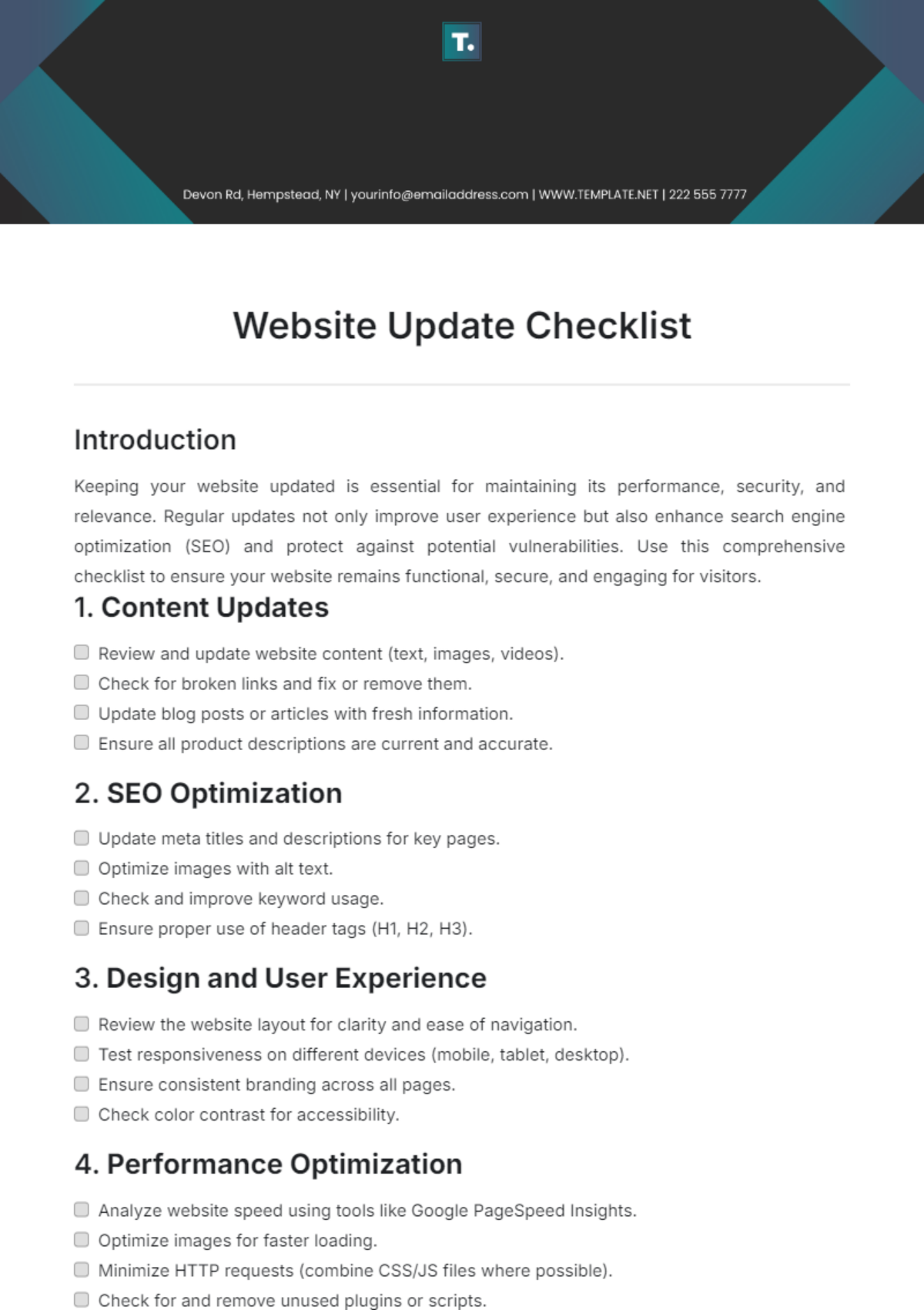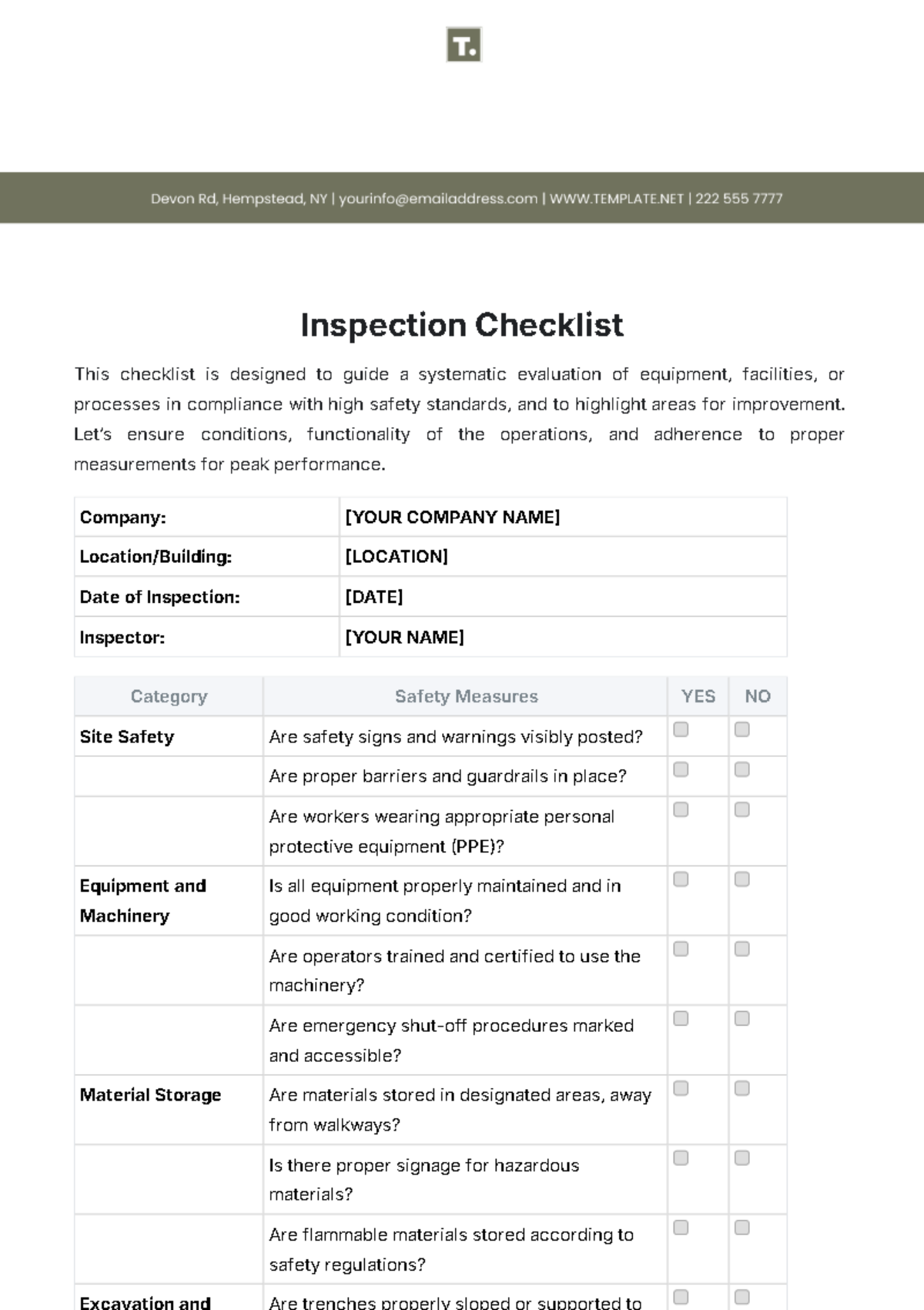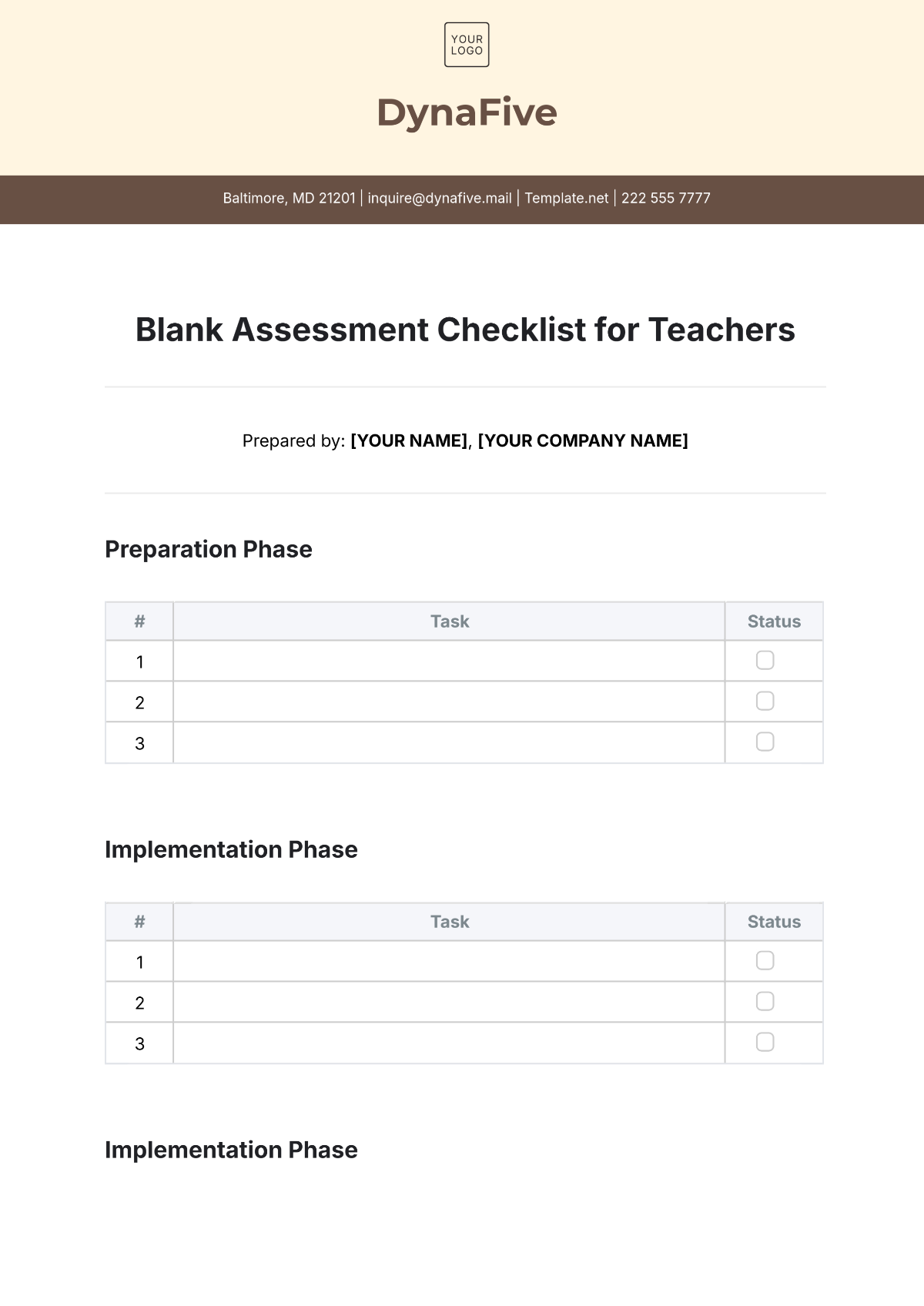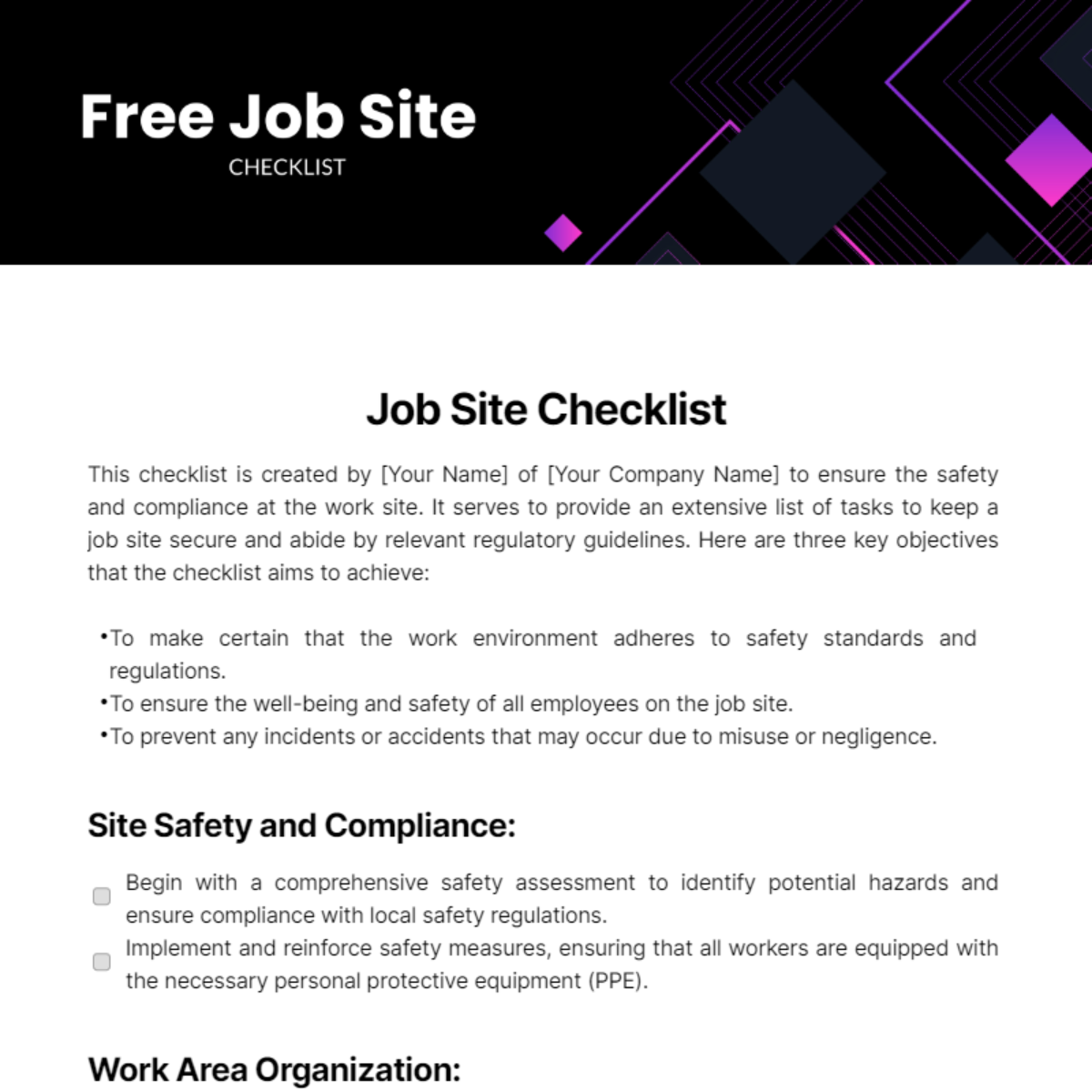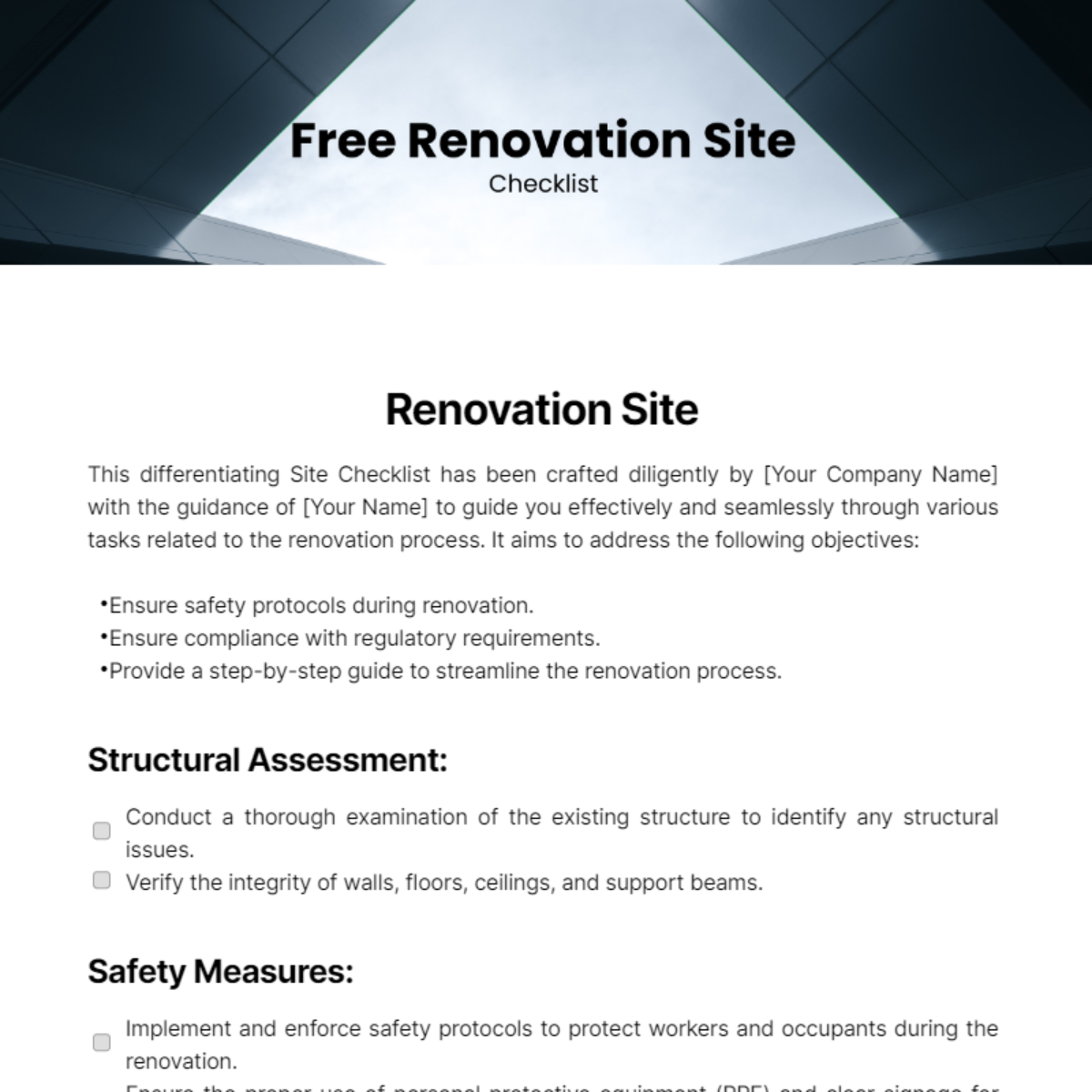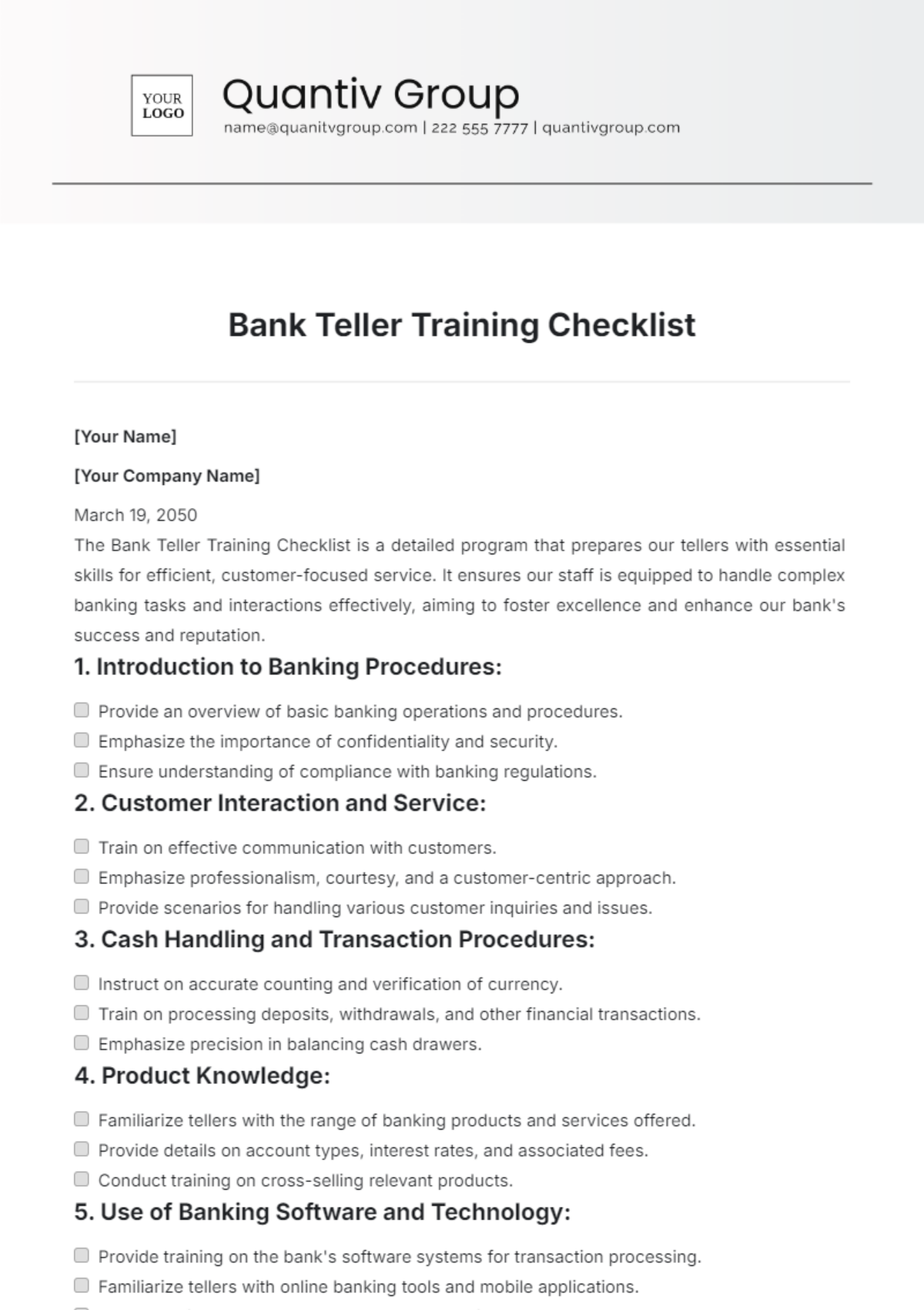Pre-Launch Website Checklist
Launching a new website is an exciting milestone, but it’s essential to ensure everything is in place before going live. A thorough pre-launch checklist helps avoid technical issues, ensures a smooth user experience, and optimizes your site for search engines. Use this checklist to verify that your website is fully prepared for launch day.
1. Content Review
Proofread all text for spelling and grammar errors.
Ensure all images and videos are optimized for the web.
Verify that all links are working and direct to the correct pages.
Check that all call-to-action buttons are functioning properly.
Confirm that legal pages (Privacy Policy, Terms of Service) are included.
2. Design and User Experience
Test the website’s layout on different screen sizes (mobile, tablet, desktop).
Ensure consistent branding (fonts, colors, logo) across all pages.
Check for intuitive navigation; ensure menus are clear and functional.
Validate that forms (contact, subscription) work and send notifications as intended.
Conduct usability testing with real users for feedback.
3. Technical Aspects
Verify that the website is mobile-responsive.
Test website speed using tools (e.g., Google PageSpeed Insights).
Ensure all scripts and plugins are updated to the latest versions.
Check for broken links and missing images using online tools.
Set up 301 redirects for any old URLs, if applicable.
4. SEO Readiness
Ensure proper use of meta tags (title, description) for each page.
Use header tags (H1, H2, etc.) appropriately for content hierarchy.
Implement alt text for all images for accessibility and SEO.
Create and submit XML sitemap to search engines.
Set up Google Analytics and Google Search Console.
5. Security Measures
Install SSL certificate for secure HTTPS access.
Implement security plugins or features to protect against attacks.
Set up regular backups of the website.
Ensure user data is encrypted and stored securely.
6. Performance Optimization
Optimize images and other media for faster load times.
Minimize HTTP requests and enable compression (e.g., Gzip).
Use a content delivery network (CDN) if applicable.
Test the website speed and performance on various devices and networks.
7. Launch Planning
Create a launch announcement plan (email, social media, etc.).
Prepare press releases or blog posts announcing the launch.
Set up social media accounts if not already done.
Determine a backup plan for any potential launch issues.
8. Post-Launch Tasks
Monitor website performance and user engagement post-launch.
Check for any immediate issues and address them quickly.
Collect feedback from users for future improvements.
Regularly update content and check for technical issues.
By following this checklist, you can ensure that your website is polished, secure, and ready to deliver a great experience to visitors on launch day.
